How to change your Safari Homepage on Mac, iPhone and iPad
While you may not think much about what your Homepage is on Safari , this can be the handiest way to see your favorite site first. Every time you open Safari, you can visit the website you like most right off the bat or when you hit your Home button. Maybe it’s your preferred news source, the weather site you trust most, or your favorite tech site, iDownloadblog.com.
To make sure you get to your favorite website quickly each day, here’s how to change your Safari Homepage on Mac, iPhone, and iPad.
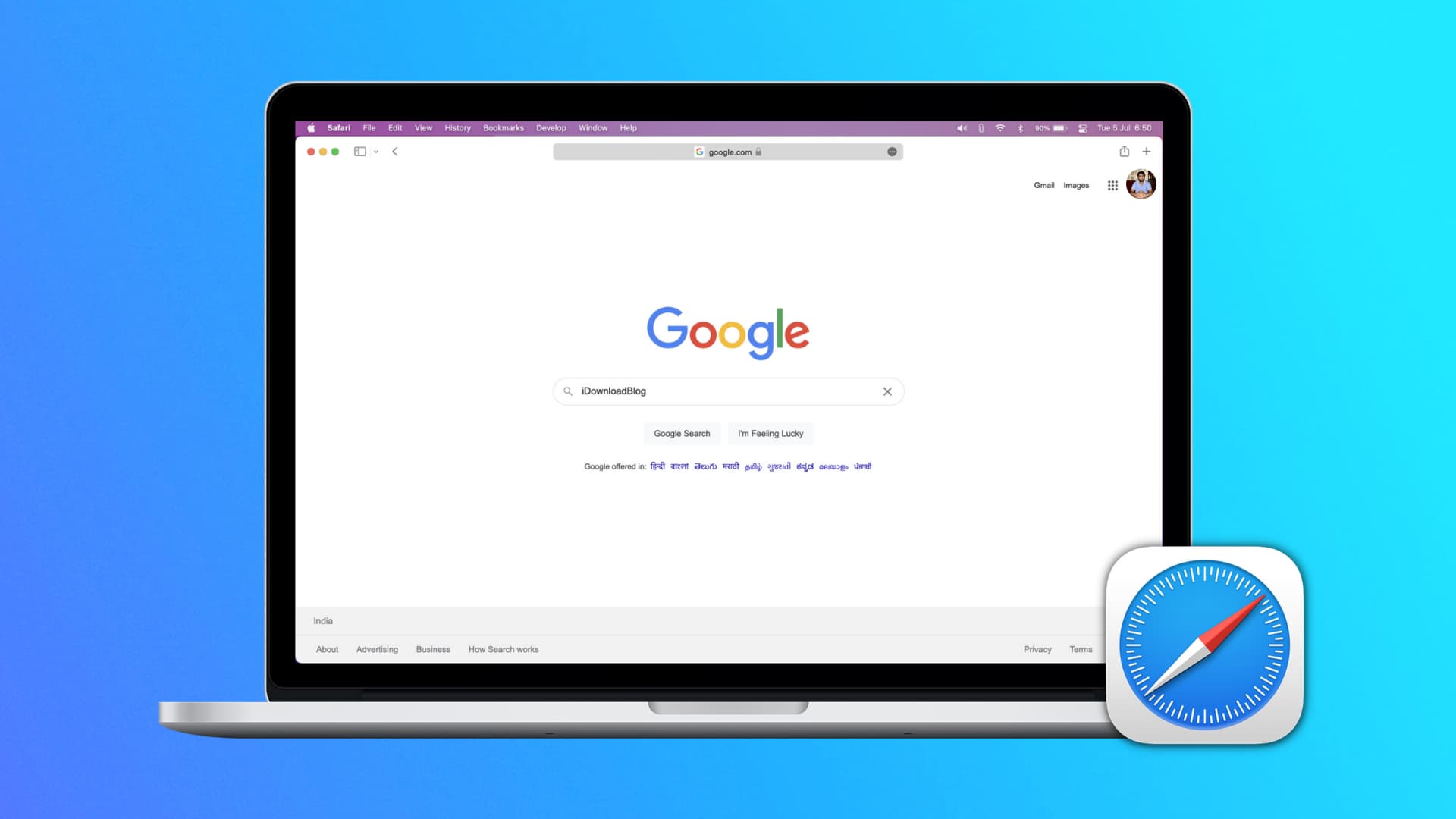

Change your Safari Homepage
Open Safari on your Mac, and then follow these steps to change your Homepage:
1) Click Safari > Preferences from the top menu bar.
2) Choose the General tab.
3) In the box next to Homepage , enter the URL of the website you want. If you are currently on that site, just click the Set Current Page button. This will change that URL for you.
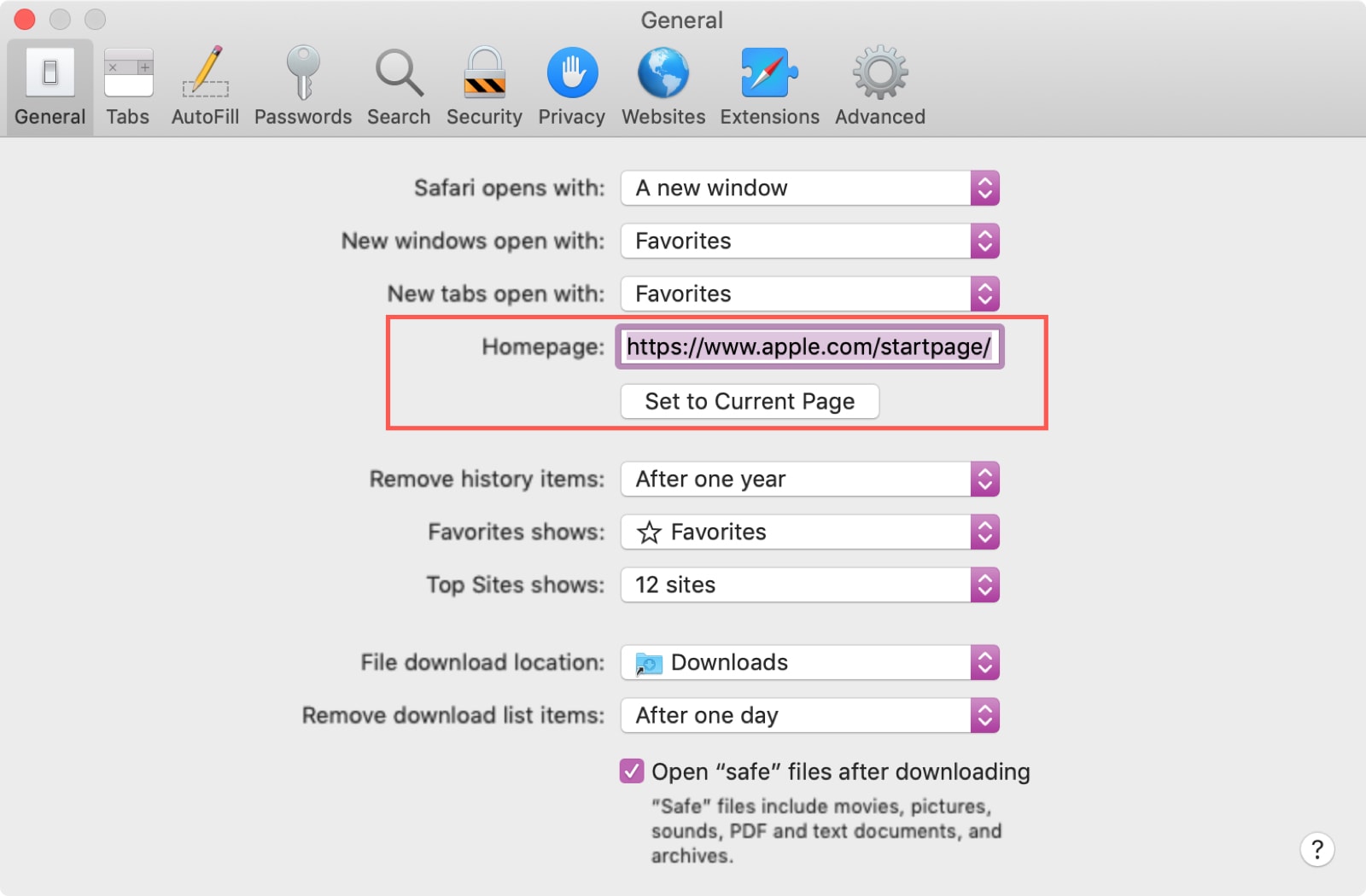
Set your Homepage for new windows and tabs
By making that change above, each time you click the Home button on your toolbar or History > Home from the menu bar, you’ll land on that page. But you can set it up so that whenever you open a new Safari window or tab, you’ll go directly to that page too.
In the same Safari Preferences window, above Homepage , you’ll see the options for New windows open with and New tabs open with . You can click the drop-down box and choose Homepage for both or just one.
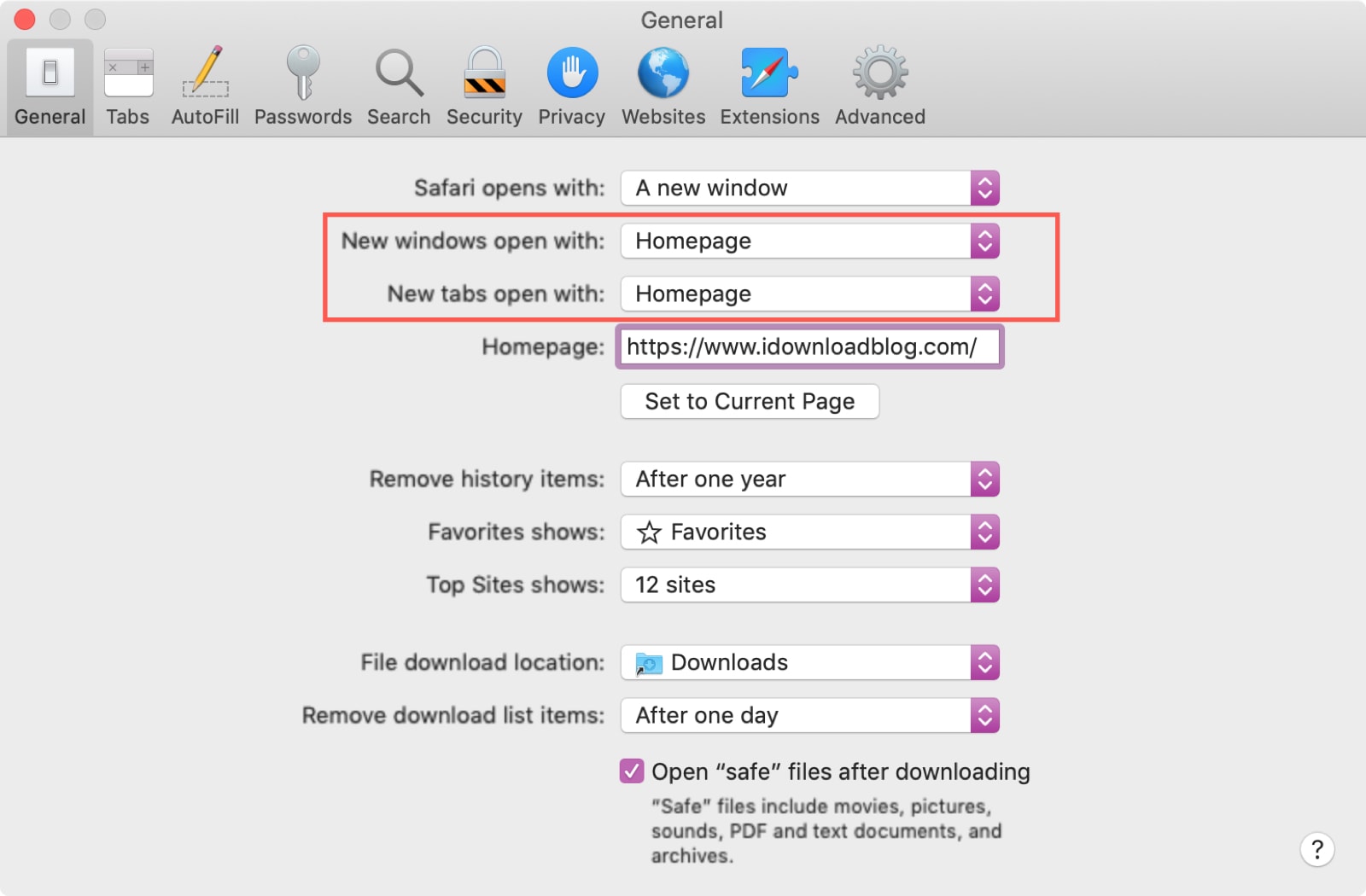
For something out of the ordinary, you can also set an image as your Safari Homepage on Mac. So, you can see your adorable pet, favorite vacation spot, or loving family whenever you open Safari.
On iPhone and iPad
Things are currently not as simple on iOS as they are on macOS. There isn’t a setting for Homepage in Safari on iPhone and iPad. But there is a workaround you can use to always open Safari with your favorite page. You’ll do this by creating a shortcut on your Home Screen, and here’s how.
1) Open Safari on iPhone or iPad and go to the site you want to use.
2) Tap the Share button at the bottom.
3) Select Add to Home Screen .
4) Name your shortcut and tap Add .
Now, whenever you want to open Safari to that “Homepage,” just tap your shortcut.
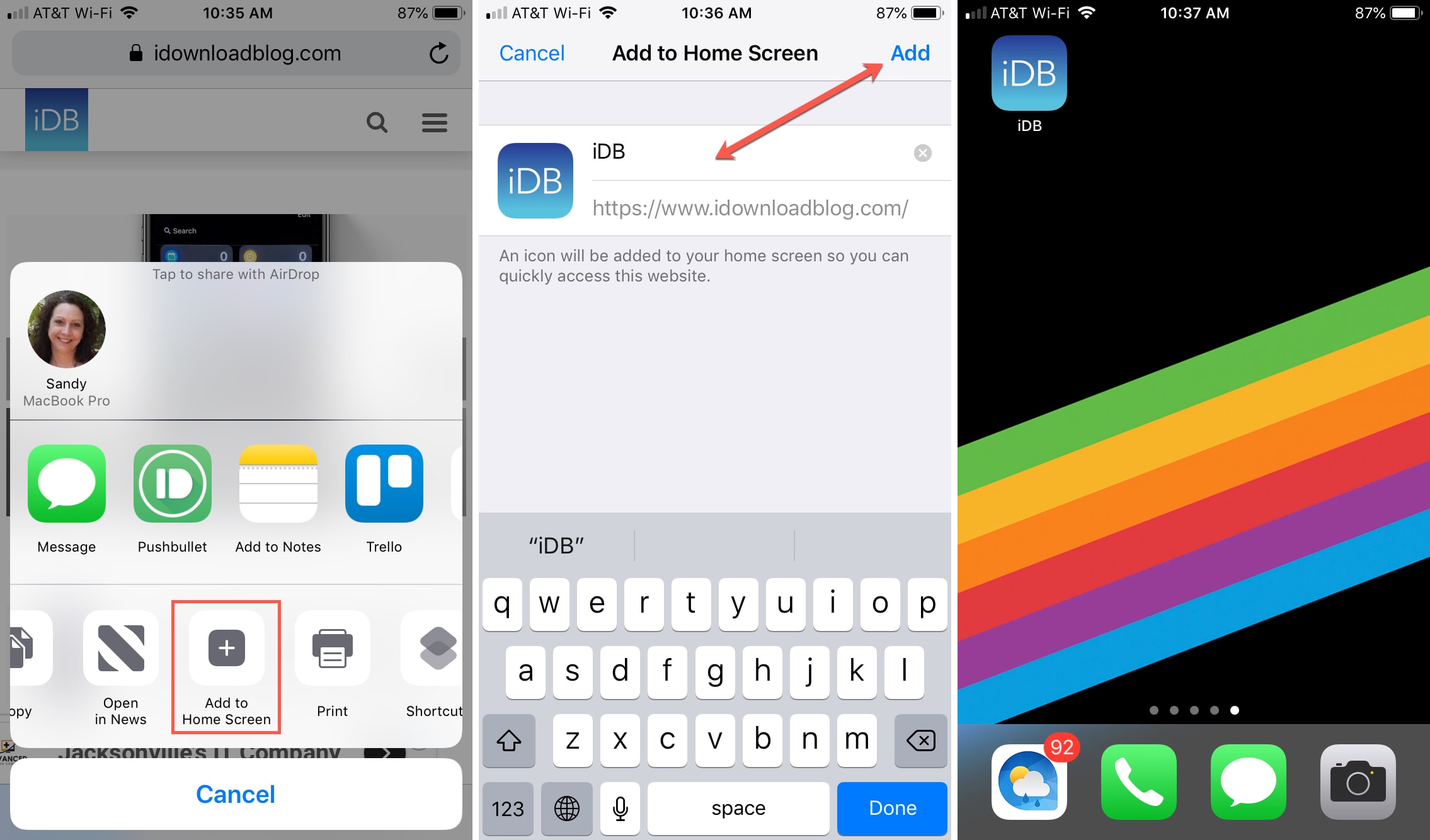
Note : If a website you use opens in a reader or mobile mode, you may not see your normal Safari options (tabs, bookmarks, etc.). So, use the desktop version of the site instead. Before performing the steps above, select the Share button > Request Desktop Site . Then, follow the instructions to add it to your Home Screen.
Setting Safari Homepage
You can always use the Favorites feature in Safari to quickly get to the sites you love most. But setting your Homepage gets you to your favorite website the fastest.
Do you plan to set a Safari Homepage for your favorite site? Let us know! And if you have tips for using Safari on Mac or iOS that you’d like to share, feel free to comment below.
Useful Safari tips:
- 11 tips to customize and personalize Safari on iPhone and iPad
- How to add Favorites in Safari on iPhone, iPad, and Mac
- How to fix Safari tabs disappearing on iPad and iPhone
- a. Send us an email
- b. Anonymous form
- Buyer's Guide
- Upcoming Products
- Tips / Contact Us
- Podcast Instagram Facebook Twitter Mastodon YouTube Notifications RSS Newsletter
Add a Website Bookmark to Your Home Screen on iPhone and iPad
Some websites don't have a dedicated mobile app for accessing their content, but that doesn't mean you can't add bookmarks to favorite websites on your Home screen.

When you tap a website bookmark on your Home screen, it opens in Safari on the specific page you selected. If the site you're linking to has a dynamic mobile-friendly layout, accessing it from your Home screen can even become an app-like experience.
What's more, you can create as many website links as you like and arrange them on your iPhone or iPad Home screen, just like you would with regular apps. Here's how it works.
How to Create a Website Link on Your Home Screen
- Launch Safari on your iPhone or iPad.
- Navigate to the site that you want to create a Home screen shortcut to.
- Tap the Share icon (the square with an arrow pointing out of it) at the bottom of the screen.
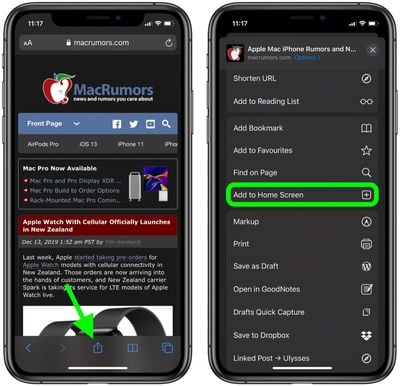
- Type a name for your site link. This will be the title that appears beneath its icon on your Home screen.
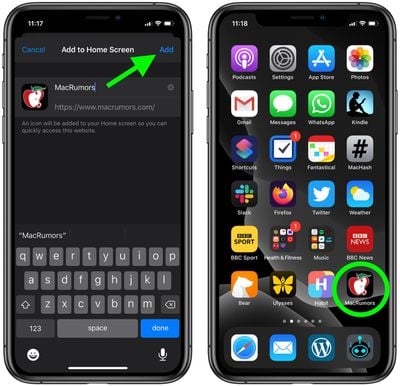
Your new "web app" will appear in the next available space on your device's Home screen. To move it like you would any other app, tap and hold its icon, then tap Edit Home Screen , and you'll be able to drag it to your desired location. When you've placed it where you want it, tap Done .
Get weekly top MacRumors stories in your inbox.
Popular Stories

iOS 18 Available Today With These 8 New Features For Your iPhone
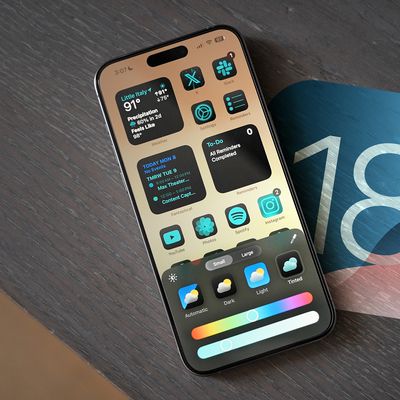
Here's When iOS 18 Rolls Out Today in Every Time Zone

10 Reasons to Wait for Next Year's iPhone 17
M4 Macs, New iPad Mini, and iPad 11 Expected at Upcoming Apple Event

iPhone 16 Pro Demand Has Been Lower Than Expected, Analyst Says

Apple Intelligence Features Expected to Roll Out in This Order Between iOS 18.1 and iOS 18.4
Next article.

iOS 18 brings major changes to the Messages app, with Apple adding several fun features.

The Photos app redesign has been one of the most controversial changes that Apple made in iOS 18.

iOS 18 is an update designed for the iPhone, but it adds several new features to the AirPods

The Phone app doesn't often get updated, but with iOS 18 and Apple Intelligence, it's getting a major overhaul.

Updates to Mail, Photos, Messages, and more, with Apple Intelligence features throughout.

iPhone Mirroring, Safari improvements, new Passwords app, and Apple Intelligence features throughout.

Apple Intelligence features, Smart Script handwriting refinement, Calculator app, and more.

New hand gestures, rearrange apps in Home View, larger Mac Virtual Display, and more.
Other Stories

7 hours ago by Joe Rossignol
9 hours ago by Tim Hardwick

How to Enable Safari on iPad: A Step-by-Step Guide for Beginners
Enabling Safari on an iPad is a simple process that can be done within the Settings app. By following a few straightforward steps, you can ensure that Safari is active and ready for browsing. This guide will walk you through the process step-by-step, provide some helpful tips, and answer frequently asked questions.
How to Enable Safari on iPad
In this guide, you’ll learn how to enable Safari on your iPad, making it accessible for all your web browsing needs. By following these steps, you will make sure Safari is active and visible on your Home screen.
Step 1: Open the Settings App
First, unlock your iPad and locate the “Settings” app on your Home screen. Tap the icon to open the app.
The Settings app is where you manage most of your iPad’s features. Think of it as the control center for your device.
Step 2: Navigate to Screen Time
Once in the Settings app, scroll down and tap on “Screen Time.” This section controls how much time you spend on different apps.
Screen Time offers insights into your app usage and includes settings for enabling or disabling specific applications like Safari.
Step 3: Access Content & Privacy Restrictions
Under Screen Time, find and tap on “Content & Privacy Restrictions.” If this is your first time here, you might need to enable it by toggling the switch at the top.
Content & Privacy Restrictions let you control various aspects of your iPad’s functionality, including which apps are allowed.
Step 4: Enter Passcode (if prompted)
If you’ve set up a Screen Time passcode, you will need to enter it now to proceed.
This step ensures that only authorized users can change these settings, adding an extra layer of security.
Step 5: Allow Safari
In the Content & Privacy Restrictions menu, tap on “Allowed Apps.” Scroll down until you find Safari, and toggle the switch next to it to the ON position.
This will enable Safari, making it accessible on your Home screen for easy browsing.
After completing these steps, Safari should be enabled on your iPad, and you can start using it immediately for all your web browsing needs.
Tips for Enabling Safari on iPad
- Make sure your iPad’s software is up-to-date for the best performance.
- If you have restrictions enabled, double-check other settings to ensure smooth functionality.
- Restart your iPad if Safari doesn’t appear after enabling it.
- Consider setting Screen Time passcodes to prevent unauthorized changes.
- Familiarize yourself with other Content & Privacy Restrictions for better app management.
Frequently Asked Questions
Why can’t i find safari on my ipad.
Safari might be disabled under Content & Privacy Restrictions. Follow the steps in this guide to enable it.
What if I forgot my Screen Time passcode?
You can reset it using your Apple ID in the Screen Time settings or through iCloud.
Does enabling Safari affect other apps?
No, enabling Safari only makes the Safari browser accessible. Other apps are not affected.
Can I limit Safari usage?
Yes, you can set app limits under Screen Time to control how much time is spent on Safari.
Is it possible to disable Safari again?
Yes, you can follow the same steps and toggle the Safari switch off under “Allowed Apps.”
Summary of Steps
- Open the Settings app.
- Navigate to Screen Time.
- Access Content & Privacy Restrictions.
- Enter Passcode (if prompted).
- Allow Safari.
Enabling Safari on your iPad is a breeze when you know where to look. Whether you’re setting up a new iPad or managing restrictions for a family member, these steps will help you get Safari up and running in no time. With Safari enabled, you have the full power of the web at your fingertips, ready to explore and learn.
For further reading, consider exploring other settings within Screen Time to get the most out of your iPad. You might discover features you didn’t know existed or find new ways to optimize your device’s functionality.
Remember, technology is here to make our lives easier, and knowing how to manage your iPad effectively is a big part of that. So go ahead, enable Safari, and dive into the endless possibilities the internet offers. Happy browsing!

Matthew Burleigh has been writing tech tutorials since 2008. His writing has appeared on dozens of different websites and been read over 50 million times.
After receiving his Bachelor’s and Master’s degrees in Computer Science he spent several years working in IT management for small businesses. However, he now works full time writing content online and creating websites.
His main writing topics include iPhones, Microsoft Office, Google Apps, Android, and Photoshop, but he has also written about many other tech topics as well.
Read his full bio here.
Share this:
Join our free newsletter.
Featured guides and deals
You may opt out at any time. Read our Privacy Policy
Related posts:
- 15 Ways to Fix Safari Not Working on iPhone in 2023
- Safari History iPhone: How to See It [2023 Guide]
- Why Can’t I Create a Private Browsing Tab in Safari on My iPhone?
- How to Get Safari Back on iPhone 13
- How to Make All Columns the Same Width in Excel 2013
- 3 iPhone Safari Tips You Might Not Know
- 15 iPhone Settings You Might Want to Change
- How to Remove Safari from iPad: A Step-by-Step Guide for iOS Users
- How to Show Bookmarks Bar in Safari on iPad
- How to Do Private Browsing on iPhone 15: A Step-by-Step Guide
- How to Block Safari on iPad: A Step-by-Step Guide for Parents and Users
- How to Turn on Safari Private Browsing on iPhone: A Step-by-Step Guide
- Can I Get Rid of Frequently Visited in Safari on iPhone?
- How to Turn Off Restrictions on iPhone 15: A Step-by-Step Guide
- How to Block YouTube on Safari on iPad: A Step-by-Step Guide
- How to Turn Off Private Browsing Mode on Your iPad: A Step-by-Step Guide
- How to Make Google Your Homepage in Safari on a Mac
- How to Enable Javascript on an iPhone
- How to Turn Restrictions Off on iPad: A Step-by-Step Guide
- How to Turn Off Restrictions on iPhone 12: A Step-by-Step Guide
- Are NPUs the New CPUs?
- Save More w/ This Hack on Big Deal Days
How to Change Your Homepage in Safari
Mobile and desktop Safari use different procedures
:max_bytes(150000):strip_icc():format(webp)/ScottOrgera-f7aca23cc84a4ea9a3f9e2ebd93bd690.jpg)
What to Know
- Safari on Mac: With Safari open, choose Safari > Preferences > select General tab.
- Then, next to Homepage, add a URL or select Set to Current Page .
- Safari iOS app: Open the page you want > Sharing icon > Add to Home Screen .
This article explains how to change your Safari homepage for the Mac and the Safari app for iOS devices. This information applies to Macs with macOS Monterey (12) through OS X El Capitan (10.11), as well as iPhones and iPads with iOS 15 through iOS 11 and iPad OS 15 through iPadOS 13.
How to Set the Homepage in Safari on a Mac
You can choose any page you want to display when you launch Safari . For example, if you usually begin browsing with a Google search, set the Google homepage as your default. If the first thing you do when you go online is check your email, tell Safari to go to your provider's site.
Here's how to set your Safari homepage on a Mac.
Open Safari on your Mac.
Select Safari from the menu bar and choose Preferences from the drop-down menu.
Select the General tab on the Preferences screen.
Next to Homepage , type the URL you want to set as the Safari homepage.
Select Set to Current Page to choose the page you're on.
Exit the General preferences window to save your changes.
Set the Safari Homepage on an iPhone
You can't set a homepage on an iPhone or another iOS device the same way you can with Safari on the desktop. However, you can add a web page link to your device's Home screen and open it to go directly to that page.
Tap the Safari icon on the iPhone Home screen to open the browser.
Open the web page you want to use as a Safari shortcut.
Tap Sharing (the square with an arrow) at the bottom of the web page to display the Sharing options.
Scroll up on the Sharing screen to see more options.
Tap Add to Home Screen .
Accept the suggested name or change it, then tap Add to create the shortcut.
You can tap the shortcut instead of opening Safari to always start at the site you chose.
Get the Latest Tech News Delivered Every Day
- How to Install, Manage, and Delete Safari Extensions
- How to Clear Search History on iPhone
- How to Change the Default Search Engine in Safari for iOS
- How to Manage the Top Sites Feature in Safari
- How to Modify Text Size in the Safari Browser on a Mac
- Customize Safari Toolbar, Favorites, Tab, and Status Bars
- How to Activate and Use Responsive Design Mode in Safari
- How to Organize Safari Bookmarks and Favorites
- How to Add, Edit, and Delete Bookmarks in iPhone's Safari
- How to Recover Lost Safari Bookmarks
- How to Disable JavaScript in Safari for iPhone
- How to Disable JavaScript in the Safari Web Browser
- How to Manage Your Browsing History in Safari
- How to Check the Version Number of Apple Safari Browser
- How to Manage Browsing History on Safari for iPad
- How to Pin Sites in Safari and Mac OS
- PRO Courses Guides New Tech Help Pro Expert Videos About wikiHow Pro Upgrade Sign In
- EDIT Edit this Article
- EXPLORE Tech Help Pro About Us Random Article Quizzes Request a New Article Community Dashboard This Or That Game Happiness Hub Popular Categories Arts and Entertainment Artwork Books Movies Computers and Electronics Computers Phone Skills Technology Hacks Health Men's Health Mental Health Women's Health Relationships Dating Love Relationship Issues Hobbies and Crafts Crafts Drawing Games Education & Communication Communication Skills Personal Development Studying Personal Care and Style Fashion Hair Care Personal Hygiene Youth Personal Care School Stuff Dating All Categories Arts and Entertainment Finance and Business Home and Garden Relationship Quizzes Cars & Other Vehicles Food and Entertaining Personal Care and Style Sports and Fitness Computers and Electronics Health Pets and Animals Travel Education & Communication Hobbies and Crafts Philosophy and Religion Work World Family Life Holidays and Traditions Relationships Youth
- Browse Articles
- Learn Something New
- Quizzes Hot
- Happiness Hub
- This Or That Game
- Train Your Brain
- Explore More
- Support wikiHow
- About wikiHow
- Log in / Sign up
- Computers and Electronics
- Tablet Computers
6 Simple Ways to Bookmark a Website on an iPad
Last Updated: December 5, 2023 Fact Checked
Creating a Bookmark
Opening a bookmark, creating a folder, deleting a bookmark, editing a bookmark, adding a website to the home screen.
This article was co-authored by wikiHow staff writer, Rain Kengly . Rain Kengly is a wikiHow Technology Writer. As a storytelling enthusiast with a penchant for technology, they hope to create long-lasting connections with readers from all around the globe. Rain graduated from San Francisco State University with a BA in Cinema. This article has been fact-checked, ensuring the accuracy of any cited facts and confirming the authority of its sources. This article has been viewed 522,023 times. Learn more...
Have you found a great website on Safari that you want to save for later? Bookmarking allows you to quickly return to sites that you've visited. You can organize your bookmarks into folders or add them to your iPad's Home screen for even quicker access.
Things You Should Know
- To add a bookmark on an iPad, open a webpage in Safari. Tap "Share" → "Add Bookmark" → "Save".
- By default, saved bookmarks can be found in "Favorites". Tap the sidebar icon → "Bookmarks" → "Favorites".
- To create a new folder, open the sidebar. Tap "Bookmarks" → "Edit" → "New Folder" → enter a name → "Done".

- Bookmarking websites on an iPad can help you remember and load specific websites without looking through your search history .
- Be sure to update your iPad .

- Safari will autofill the title field. If you want to change it, tap the title, and then tap the x to delete it. Then, enter a new title.

- The sidebar will open on the left side of the screen.

- Use this method if you want to create folders to separate and organize your bookmarks.

- You can also create a folder within a folder. Just navigate to the folder, tap Edit , and then tap New Folder to create it.

- Tap and hold ☰ next to the bookmark.
- Drag the bookmark to a new position and release it.
- Repeat for all other bookmarks.

- Tap the bookmark.
- Tap the x next to the existing title.
- Enter a new title.
- Tap done on the keyboard or Back in the top-left corner.

- Use this method if you want to create an app icon on your Home screen for a specific webpage. This will create a shortcut to the website in Safari.

- When you tap it, the webpage will load in Safari.
Expert Q&A
You might also like.

- ↑ https://support.apple.com/guide/ipad/bookmark-favorite-webpages-ipadc602b75b/ipados
About This Article

- Send fan mail to authors
Is this article up to date?

Featured Articles

Trending Articles

Watch Articles

- Terms of Use
- Privacy Policy
- Do Not Sell or Share My Info
- Not Selling Info
wikiHow Tech Help Pro:
Level up your tech skills and stay ahead of the curve
You can make a difference in the Apple Support Community!
When you sign up with your Apple ID , you can provide valuable feedback to other community members by upvoting helpful replies and User Tips .
Looks like no one’s replied in a while. To start the conversation again, simply ask a new question.
how do you set home page in safari on ipad
iPad 2, iOS 5.0.1
Posted on Jan 31, 2012 6:03 AM
Posted on Jan 31, 2012 6:17 AM
There is no way to set a home page - but you can create a shortcut on the desktop that will always open to a page that you want to use for a home page.
Launch Safari and navigate to the page that you'd like to use as your home page. Tap on the arrow icon at the top - next to the address field - and select - Add to Home Page. That will put a shortcut on your home screen and when you click on that icon on the home screen - it will open to that page in Safari that you selected as your home page.
Loading page content
Page content loaded
Jan 31, 2012 6:17 AM in response to lopakaBob
Jun 2, 2012 6:10 AM in response to lopakaBob
These are all totally incorrect responses.
Safari > Preferences (Command + comma) > General > New Window Opens With > Homepage > Enter Homepage address in blank provided below or click Set to current page
Jan 31, 2012 6:07 AM in response to lopakaBob
There is no settings for Home page in safari.
Jun 2, 2012 6:15 AM in response to randled
randled wrote: These are all totally incorrect responses. Safari > Preferences (Command + comma) > General > New Window Opens With > Homepage > Enter Homepage address in blank provided below or click Set to current page
No, the previous responses are correct. You, on the other hand, are apparently discussing Safari on a computer. This is the iPad forum.
Jun 2, 2012 6:31 AM in response to IdrisSeabright
You're right. I missed that.
Oct 5, 2016 3:07 PM in response to Diavonex
Actually there is a way. When on the site that you would like to have as the home page. Tap on the "up arrow in a box" icon than swipe to the right until you see "Request Desktop Site". Tap on that and you have it as the home page.
Jan 2, 2017 5:45 AM in response to mblee
This was actually quite helpful, thank you!
Jan 2, 2017 2:08 PM in response to Community User
Where can you find the 'up arrow in a box' icon on an iPad Air 2 if it is not there at the top ?

How to Put Safari Back in the Dock at Bottom of iPhone or iPad Home Screen
This has happened to many iPhone and iPad users; in some way or another, you have deleted your Safari app icon from the Dock on your Home Screen, and you want it back. Of course, deleting something is much easier than putting it back; after all, when you removed it, you knew where it was. This article will explain how to return your Safari icon to your Dock or Home Screen.
On your iPhone or iPad, the Safari icon is what you tap on in order to open your Safari browser. For many people, their browser is one of their most used apps, and so they like to keep their browser icon in a convenient place. You may have removed the icon by accident, or maybe you were trying out another browser like Firefox or Chrome. Whatever the case, we’ll show you how to get your Safari icon back.
Finding your Safari app icon
Generally, there are a couple of possibilities when you can’t find an app on your device:
- You deleted the app from your iPhone (iPad).
- You put the app icon on another page or removed it from the Home Screen.
However, some Apple apps like Safari can not be deleted from your iPhone or iPad. For Apple apps that can be deleted , you can download and reinstall them from the App Store .
Safari and all of the other apps currently installed on your iPhone or iPad, whether they are on your Home Screen or not, can be found in your App Library .
Putting Safari back
Here is how to get Safari from the App Library:
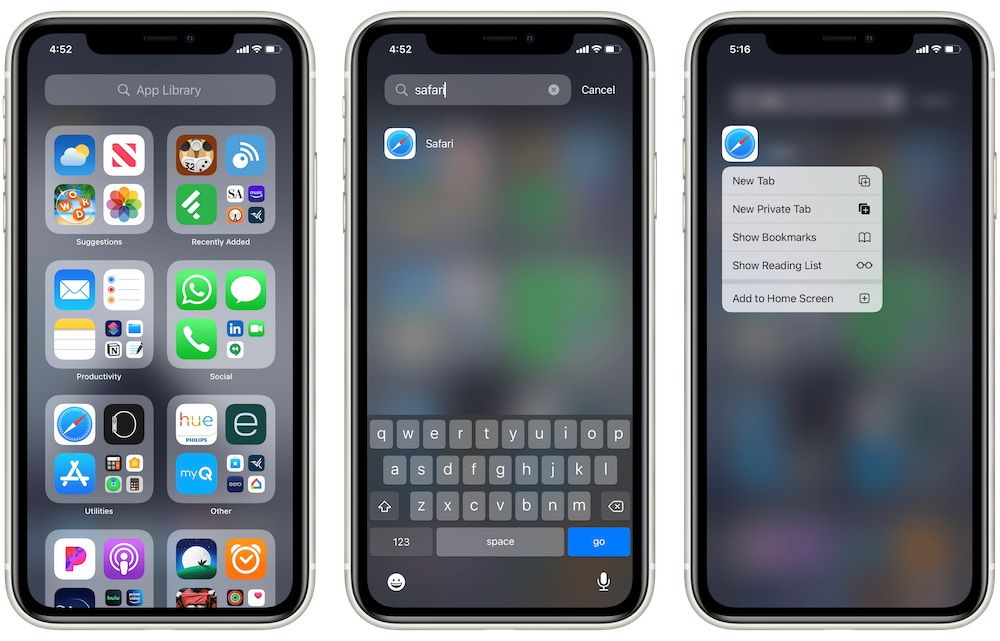
- On your iPhone or iPad, swipe left on your Home Screen pages until you get to the last page. Swipe left again to see your App Library.
- In the search field, type Safari .
- Tap on Add to Home Screen .
- If you have space in the Dock, Safari will appear there. Otherwise, Safari will appear on one of your Home Screens.
- Your right-most Home Screen will appear. If you want to drop it on one of your Home Screen pages, just keep dragging it until you get to the desired spot on the page, then release it.
- If you want it in your Dock at the bottom of your screen, drag it down to the Dock, position it where you would like and release.
- To reposition Safari, press and hold on the icon until all icons begin to wiggle. Then you can drag Safari to the desired location. Tap Done in the top-right corner of your screen.
The apps on your iPhone or iPad can be deleted, removed from the Home Screen or hidden (you can even hide entire Home Screen pages if you want to). If you need to recover deleted apps for your device, you should be able to download them again from the App Store (assuming they are still available).
Related articles
- How to Unhide Apps on your iPhone
- How to Put the Safari URL Address Bar Back at the Top of the Screen in iOS 15
- Critical Security Warning! Your Mac is Infected…Fix
- Finder has Disappeared from the Dock, How to Fix
- How To Change Default Search Engine in Safari (iOS and macOS)
Dr. Stacey Butler is a tech writer at macReports covering news, how-tos, and user guides. She is a longtime Mac and iPhone user and holds a Ph.D. from the University of Illinois at Champaign-Urbana. She is a former faculty member and a math teacher. Here is her LinkedIn profile , Google Scholar profile and her ResearchGate profile . Email Stacey Butler .

Similar Posts

How to Type Upside Down Exclamation (¡) Point on iPhone, iPad and Mac
The upside-down exclamation (¡) point, also called the inverted exclamation mark, is a punctuation sign commonly used in Spanish and other languages in similar linguistic groups. This special character is very similar to…
How to Customize Your iPhone Lock Screen in iOS 16
The latest iOS includes several new and useful features. Here we will focus on the one that stands out the most; as soon as iOS 16 is finished installing, you will notice changes…

WhatsApp Says Reconnecting on iPhone? How to Fix
While in the middle of a WhatsApp call, your call may be interrupted, and you may see a message saying, “Reconnecting…” on your iPhone’s call screen. You may also notice a No Connection…
Does AppleCare Cover iPhone Water Damage?
Many iPhone users may be wondering if AppleCare covers water damage. Water damage can occur in many different ways including spilling liquid onto your phone or dropping your phone into water. Although iPhones…
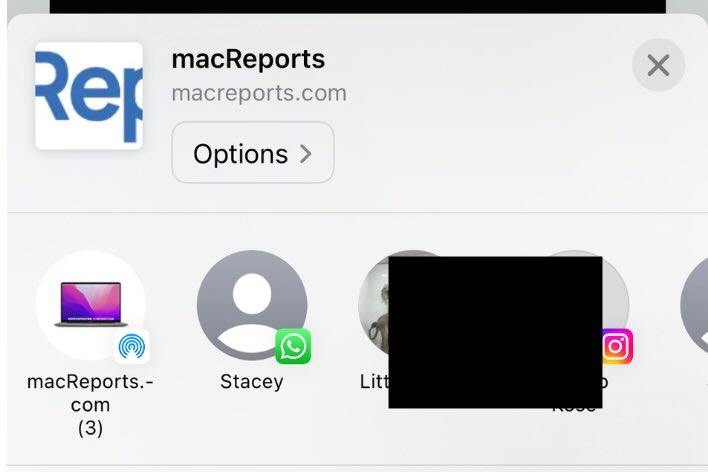
iPhone Share Options Not Working? How to Fix
Some users are running into an issue where the Share menu on iPhone is not working as expected. There are several aspects to this problem, including: Your iPhone makes it easy to share…

AirPrint Not Working after Upgrading to iOS 17
Some users have said that they are not able to print documents, messages, or photos because AirPrint is not working. They further said that this problem started after updating their iPhones to iOS…
This was a great help to those of us who are techno challenged! Clearly written and easily understood. Thanks so much! Yvonne from Wyoming
Thank you. This was well written, useful, and exceptionally logical. And it fixed my problem!
Leave a Reply Cancel reply
Your email address will not be published. Required fields are marked *
Categories:
🔥 Get official iPhone 16 wallpapers now!

How to add a website to your iPhone home screen
Updated on:
While many of the popular websites now come with dedicated apps for iPhone, a few of your favorite sites still don’t. Yes, you can bookmark your favorite websites for easy access, but doesn’t heading to the bookmarks tab to access those websites sometimes feel tedious?
Well, with more and more websites incorporating PWA (Progressive Web Apps) in their code, you can add a website to your iPhone Home Screen, which, to some degree, can act and even look like an iOS app.
Keep reading to learn how to add a website to the Home Screen on your iPhone or iPad.
How to add any website to your iPhone Home Screen
How to add a website shortcut to your iphone home screen, how to add a chrome web app to your iphone home screen.
When it comes to using a web browser on an iPhone, the Safari browser comes pre-installed and has emerged as the top choice for iPhone users. Here’s how to use Safari to add a website to the iPhone’s Home Screen.
- Open the website you want to add your iPhone Home Screen in the Safari browser.
- Tap the Share button at the bottom center.
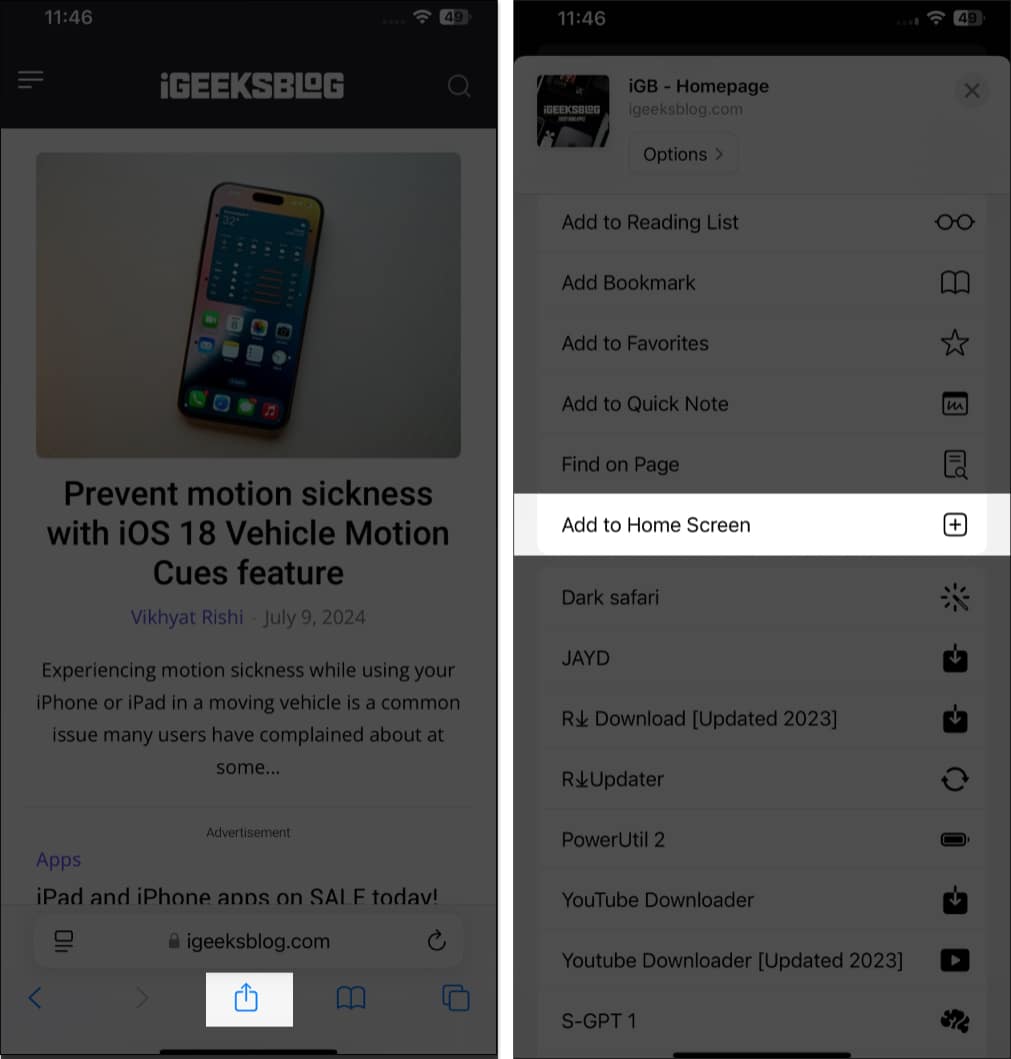
- Here, you can give a custom name to the website’s Home Screen icon or go with the default name.
The web app will now appear adjacent to the other apps on your iPhone Home Screen.
At any point, if you no longer need the web app, you can remove it, similar to how you remove a regular app on your iPhone. Here’s how:
- Long touch the website’s Home Screen icon and select the Delete Bookmark option in the pop-up menu that appears.
- If the added website has a web app, tapping the Home Screen icon will open the web app, which mostly functions like a native iOS app. Otherwise, the website will open in your iPhone’s default browser.
Adding a website to your Home Screen via the Safari browser is straightforward, but it doesn’t allow you to mingle with the website’s icon or name. This can become a problem when you don’t want others to know which websites you’ve added to your iPhone Home Screen.
In that case, you can use the Shortcuts app to create a custom shortcut that opens a specific Safari web page, give it a custom name and icon, and add it to your Home Screen alongside other apps. Here’s how:
- Open the Shortcuts app .
- Tap + in the top-right corner of the screen to create a new shortcut.
- Search for Safari in the Search Actions bar and tap the appropriate result.
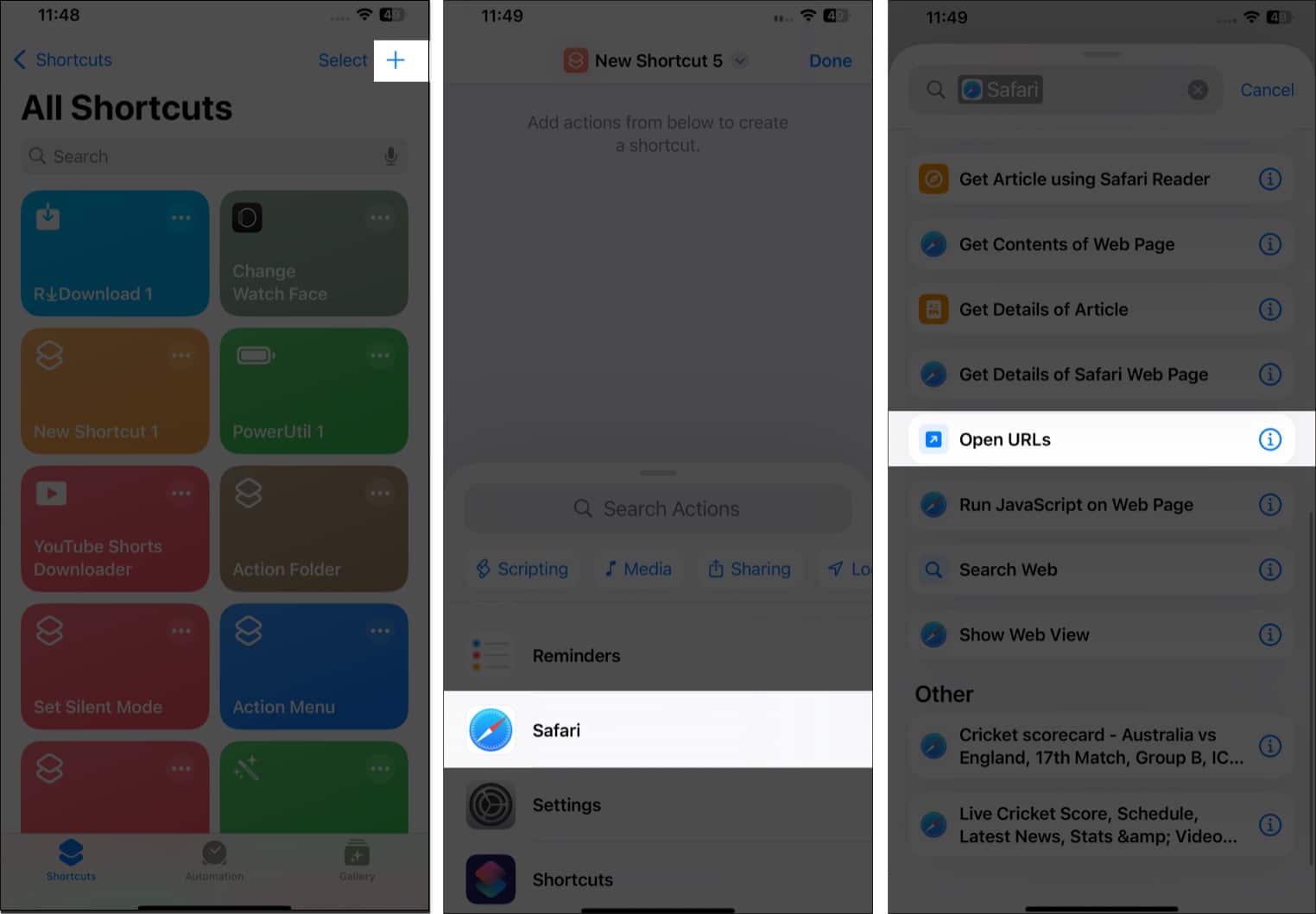
- Now, tap the blue URL text and paste the URL of the website you want to add to the Home Screen.
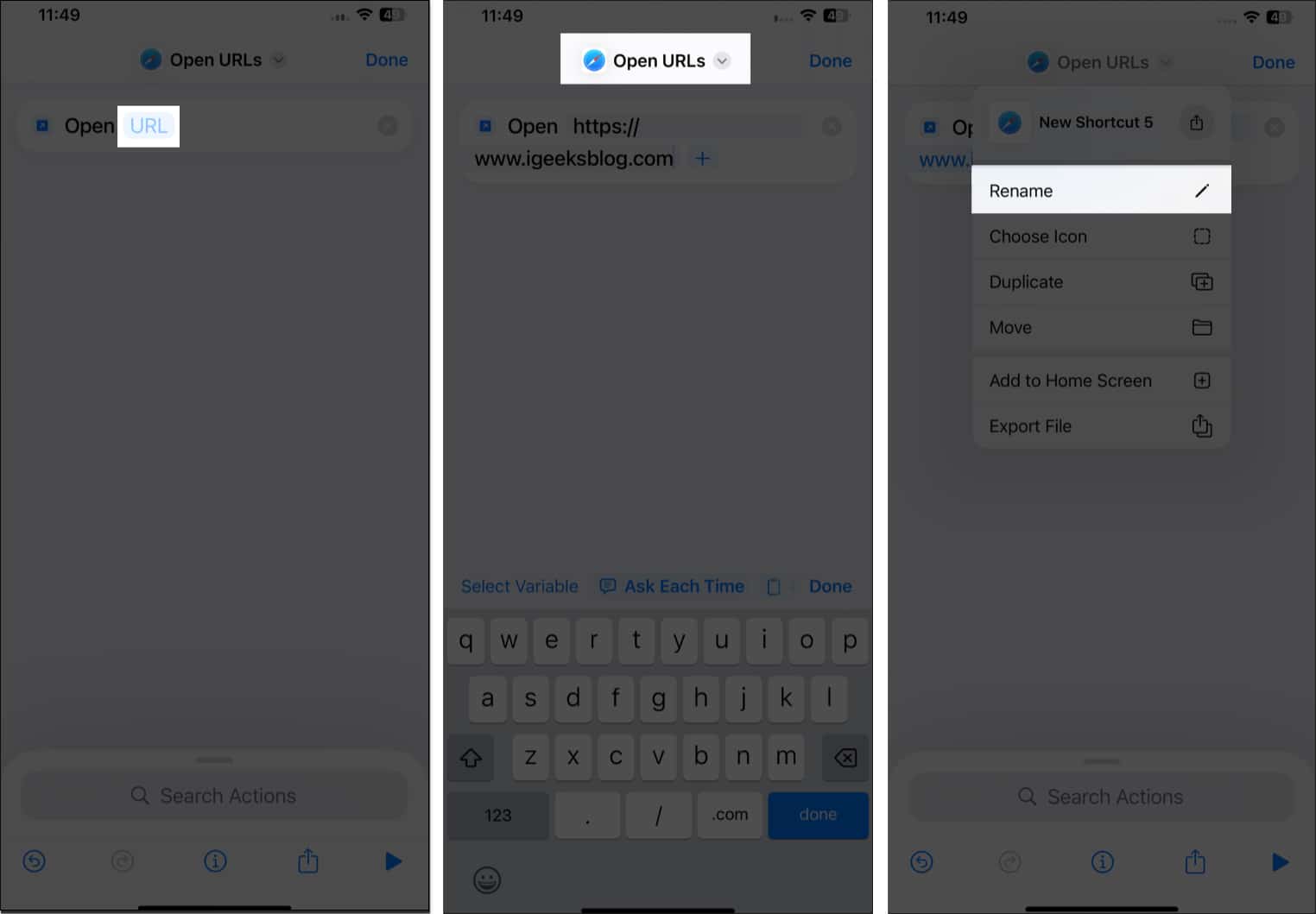
- Once done, tap the Share button at the bottom center.
- Now, select the Add to Home Screen in the menu that appears.
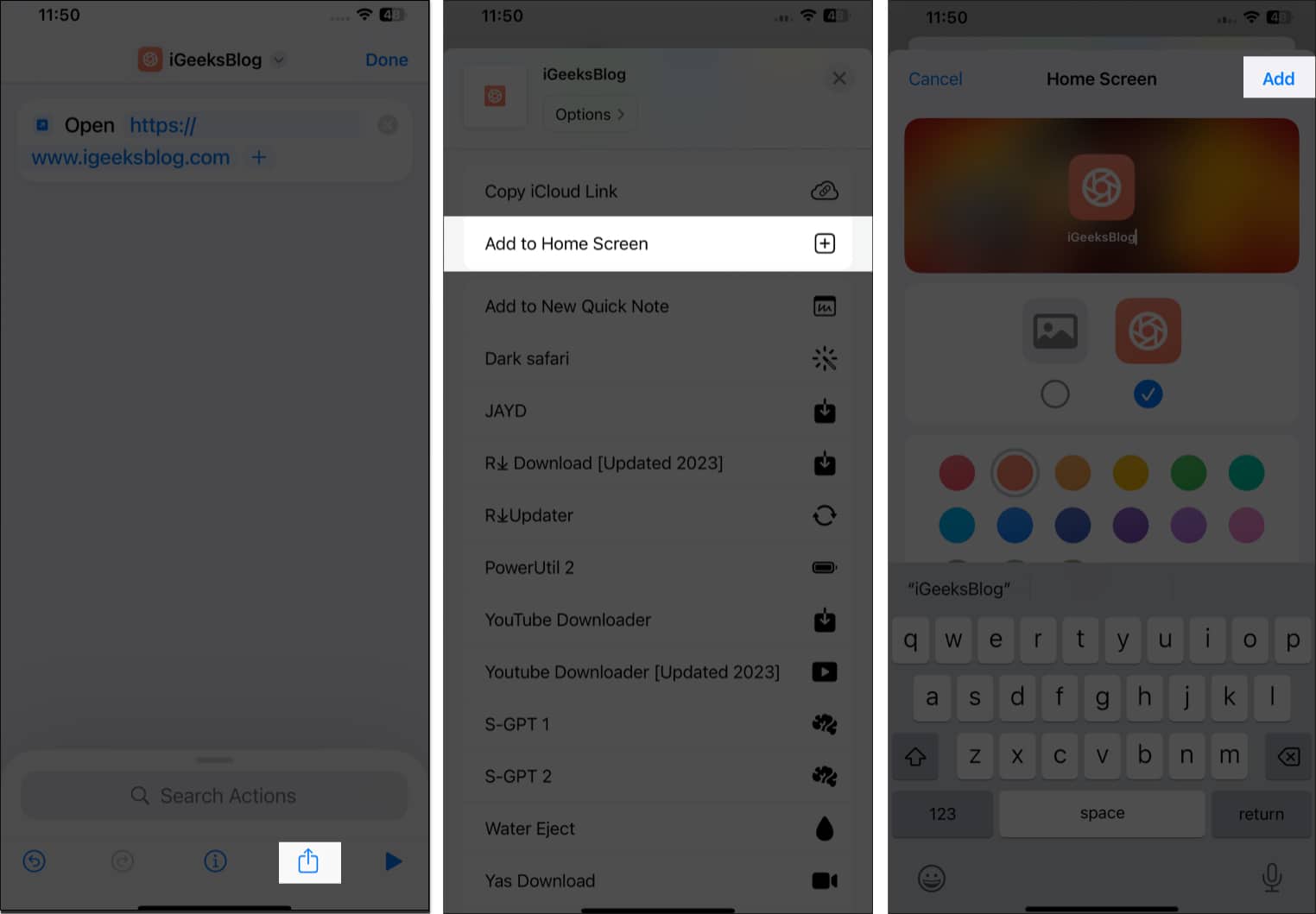
There’s no doubt that Safari is the top choice for iPhone users. However, many new users who migrate from Android to iPhone still prefer using the Chrome browser, as they’re more familiar with it. This makes it equally important to know how to add a Chrome web app to your iPhone Home Screen.
- Open the Chrome browser.
- Go to the website you want to add to your iPhone Home Screen.
- Here, tap the Share button in the address bar, then tap on Add to Home Screen in the Share Sheet.
- Edit the website name if you want.
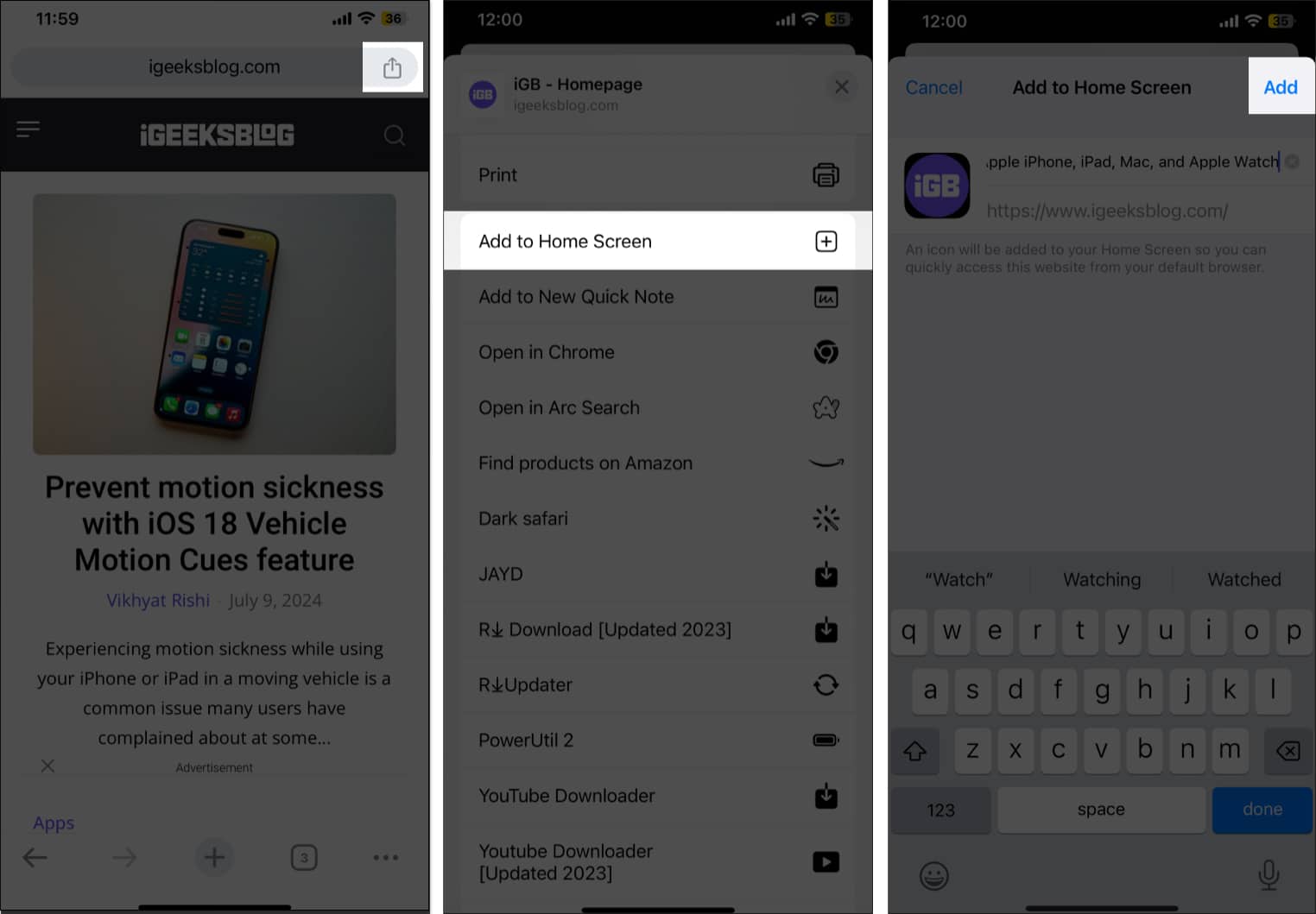
Websites turned into apps…
As you’ve seen, adding websites to the Home Screen on your iPhone is super easy. Once added, the websites appear as standalone apps on the Home Screen and even function as one if the corresponding web app exists. The best part is that you can access them with a single tap, which saves you the hassle of opening the browser and navigating to them manually.
If you still have any doubts or queries, comment below, and we’ll do our best to resolve them.
FAQ’s
Yes, you can. All you need to do is create a shortcut in the Shortcuts app with a custom name and icon for the website you want to add to your Home Screen.
While the Home Screen website won’t eat much storage space, it can still occupy some storage to use as cache memory.
If the website has a web app, it will work as a standalone app. Otherwise, it will open in your default browser.
- How to add a website to your Dock on a Mac (Safari and Chrome)
- How to customize and share website settings in Safari on iPhone
- How to prevent websites from tracking you in Safari on iPhone
Want to read more like this?
Join 15,000+ Apple enthusiast to get the latest news and tips from iGeeksBlog+.
We won’t spam, and you will always be able to unsubscribe.
Leave a Reply Cancel reply
Your email address will not be published. Required fields are marked *
Save my name, email, and website in this browser for the next time I comment.
Similar posts you might also like
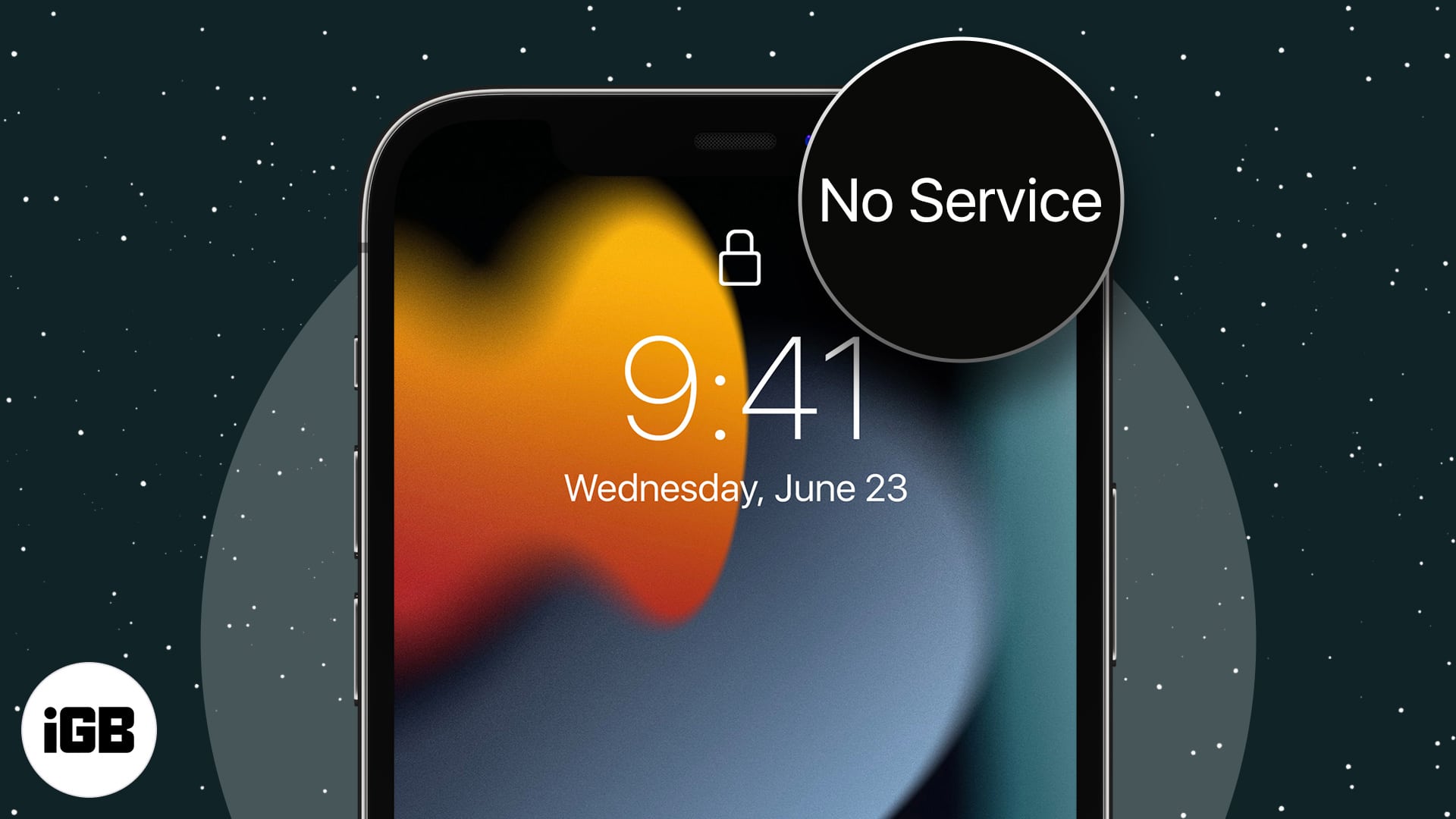
No Service on iPhone after iOS 18 update? Try these 12 fixes!
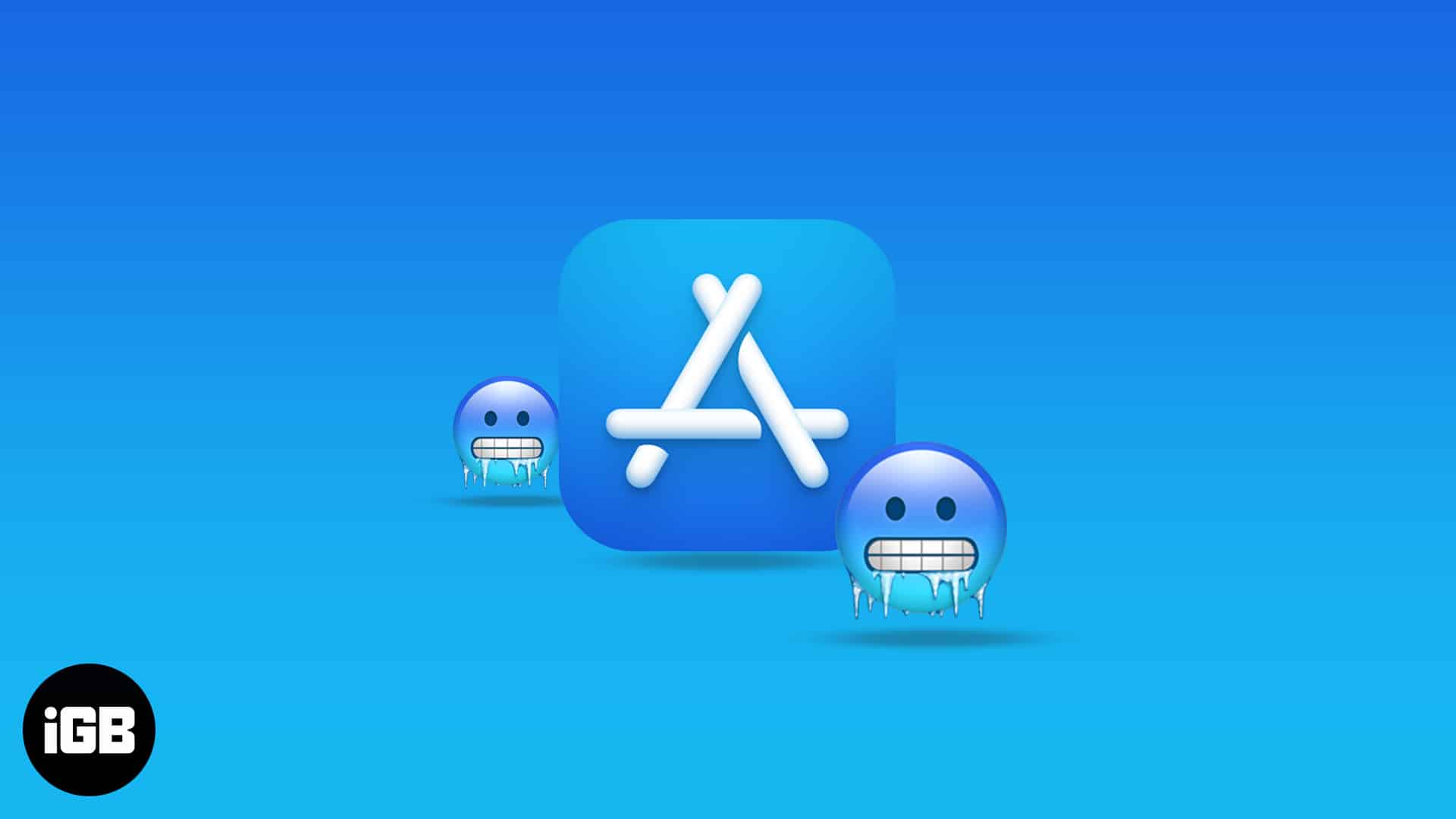
How to fix iPhone apps freezing after iOS 18 update
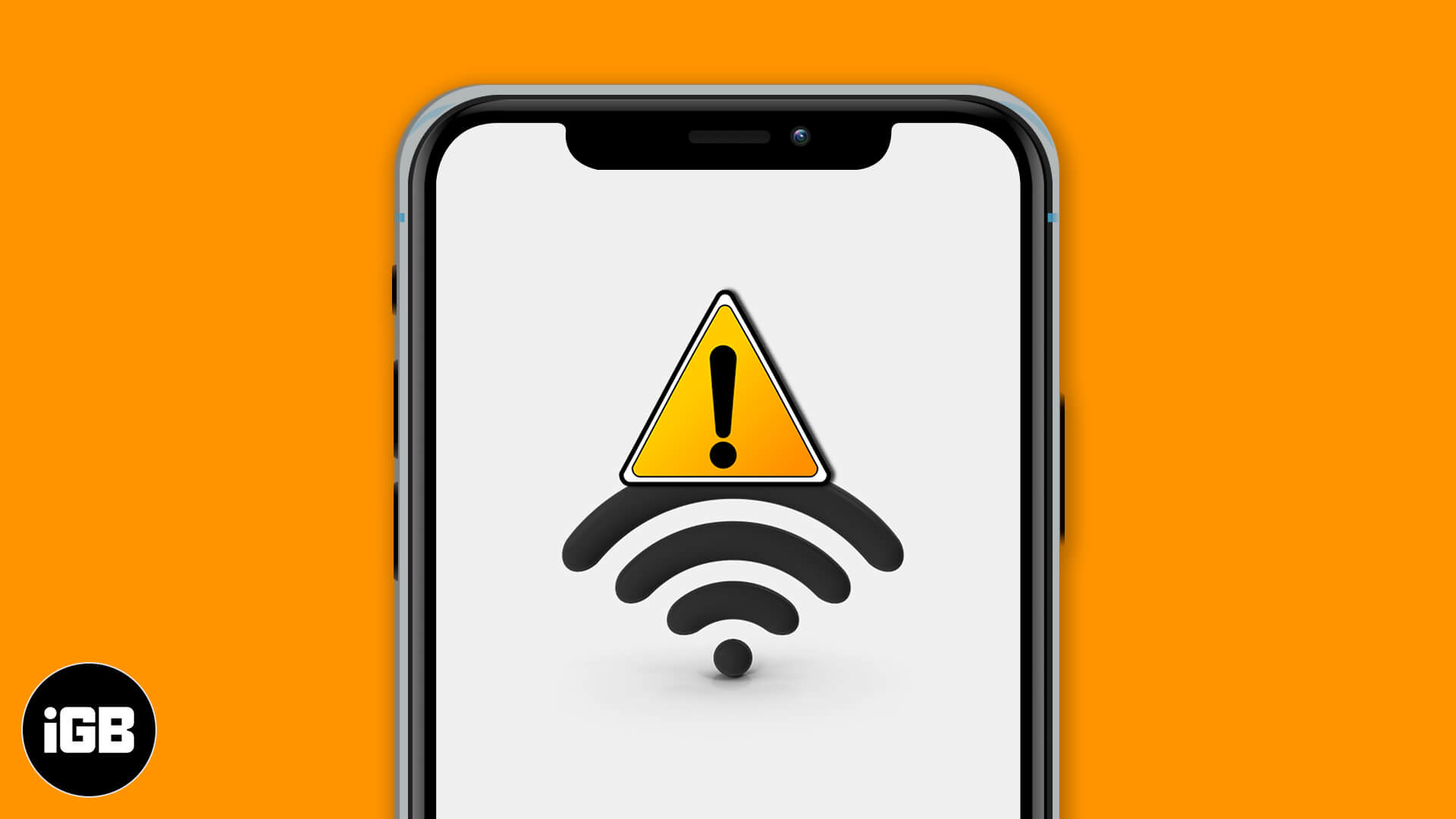
iOS 18 Wi-Fi not working? 10 Ways to fix it
Editorial Guide
Review Policy
© 2024 iGeeks Media Private LTD. All rights reserved.
Privacy Policy

Tips & Tricks
Troubleshooting, how to add a website to home screen of iphone & ipad in ios 15, ios 14 ,& ios 13.

Want to put a website directly on your iPhone or iPad home screen for super easy and quick access? If you have a website you visit often (like osxdaily.com of course) you may want to add that website to the Home Screen of iPhone or iPad. This places an icon for the chosen website on your devices home screen that can then be tapped on like any other app icon, and when tapped it opens that chosen webpage in Safari on iPhone, iPad, or iPod touch.
Adding a website to the home screen of iOS and iPadOS can be done with any website, whether you bookmark the site or not. This process is really simple with the latest versions of iOS and ipadOS system software, so read on to learn how to add a website to to the Home Screen of iPhone or iPad.
How to Add Websites to Home Screen of iPhone & iPad
Here’s how you can add any website to the Home Screen of iPhone or iPad for quick access:
- Open Safari on the iPhone or iPad
- Navigate to the website you want to add to the home screen (for example osxdaily.com ) either by navigating to it directly or via bookmark
- Tap on the Share icon, it looks like a box with an arrow coming out of the top
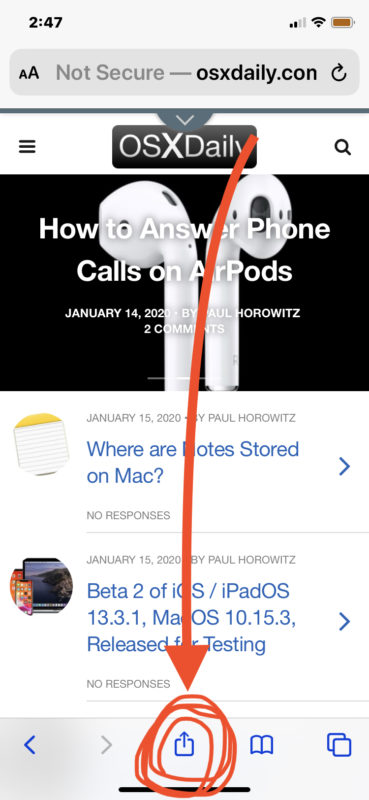
- Scroll through the list of sharing options and choose “Add to Home Screen”
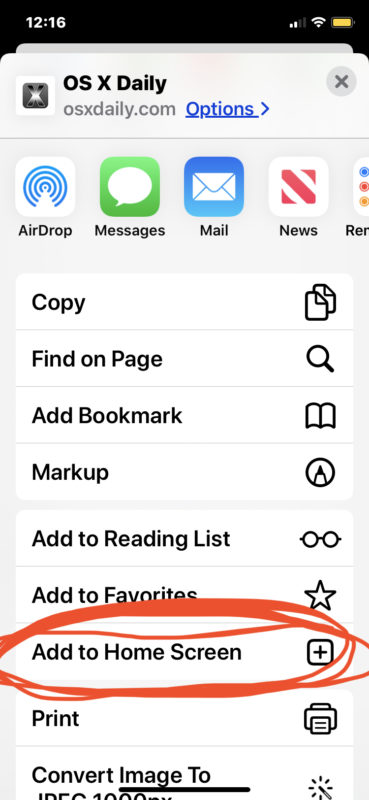
- Give the home screen icon a name (like “OSXDaily.com”) and tap “Add”

- Return to the Home Screen of iPhone or iPad to find the newly created website available as an icon
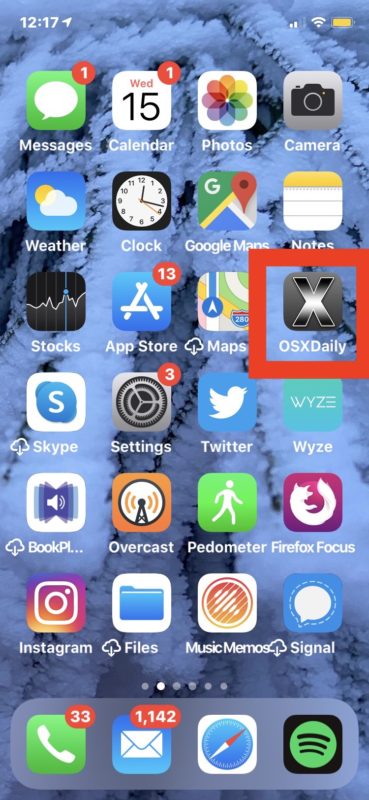
You can move the added home screen website icon to anywhere you want, including to the Dock. Moving these website links on the home screen is the same as rearranging and moving app icons on Home Screen of iPhone and iPad , as is removing and deleting them.
This offers a super simple way to quickly access websites right from the home screen of an iPhone, iPad, or iPod touch.
Once a website home screen icon has been added, tapping on it behaves like any other app except that it launches Safari and goes immediately to the website you chose to add.
These home screen shortcuts to websites differ from general bookmarks, and they also differ from Safari Favorites list collection of bookmarks too. In fact, you don’t have to bookmark a site to add it to the devices home screen at all, though if you’re looking at a site frequently (and we certainly hope you browse osxdaily.com every day at least) it’d be a good idea to bookmark it.
For best results with most websites, you’ll want to pick the home page or root domain of the website rather than a specific article or section. For example, rather than adding this particular article to your device home screen, you’d want to add the root domain of “osxdaily.com” so that when the Home Screen icon is tapped the site launches to the home page.
You can add as many websites to the Home Screen of iOS and iPadOS as you want, so if you have a handful of favorite sites you visit frequently add them all to your devices home screen for easy access.
(Note that this articles screenshot set demonstrate this feature with Safari on iOS 13.3 but it looks the same in iPadOS 13 and later as well, whereas earlier versions of iOS had a slightly different look to “Add to Home Screen” option in Safari Sharing actions menu. You can also add bookmarks to the home screen with Chrome, but that’s a topic for another article.)
Go ahead and try this out yourself by adding osxdaily.com to your devices home screen if you’d like!
Do you put webpages on your iPhone or iPad Home Screen for easy access? Share your experiences and opinions on this capability in the comments.
Enjoy this tip? Subscribe to our newsletter!
Get more of our great Apple tips, tricks, and important news delivered to your inbox with the OSXDaily newsletter.
You have successfully joined our subscriber list.
Related articles:
- OSXDaily.com Privacy Policy
- How to Add Chrome Bookmarks to iPhone & iPad Homescreen
- How to Add Widgets to iPad Home Screen
- How to Add Widgets to iPhone Home Screen
» Comments RSS Feed
Thank You so much
I have the same question. I have done this in the past and to remove them you do the same thing you would to remove an app from the screen. However, lately I’m not able to remove them.
How do I remove them?
Cool, thank you.
Leave a Reply
Name (required)
Mail (will not be published) (required)
Subscribe to OSXDaily
- - How to Prepare Your iPhone for iOS 18
- - Which Apple Watch Models Support WatchOS 11? Here’s the List
- - iPadOS 18 is Compatible with These iPads
- - iOS 18 is Compatible with These iPhone Models
- - MacOS Sequoia is Compatible with These Macs
- - Fun: Don’t Forget to Accept New iCloud Terms & Conditions
- - Release Date for iOS 18, macOS Sequoia, iPadOS 18, is September 16
- - MacOS Sequoia 15 Release Candidate Available to Download Now
- - iOS 18 Release Candidate Available to Download Now
iPhone / iPad
- - iPhone 16 & iPhone 16 Pro Announced with Faster Chips & Apple Intelligence Support
- - iOS 18 Beta 8 Available to Download
- - MacOS Sequoia 15 Beta 8 Available to Download
- - How to Run Llama LLM on Mac, Locally
- - MacOS Sequoia 15 Beta 7 Available for Testing
- - How to Recover an Unsaved PowerPoint on Mac
- - How to Uninstall VMWare Fusion on Mac
- - chronod on Mac – High CPU Use & Network Access Requests Explained
- - Why Are iPhone Videos Low Quality & Blurry When Sent to Android Users?
- - Fix brew Error “The arm64 architecture is required for this software” on Apple Silicon Mac

About OSXDaily | Contact Us | Privacy Policy | Sitemap
This website is unrelated to Apple Inc
All trademarks and copyrights on this website are property of their respective owners.
© 2024 OS X Daily. All Rights Reserved. Reproduction without explicit permission is prohibited.
- Internet , Productivity
How To Add Safari Back To The Home Screen Of iPhone & iPad?
Safari is an iPhone and iPad default browser that comes pre-installed. You can’t uninstall it, as it’s integrated with the OS. However, there have been a few cases where users cannot locate their browser on the home screen.
If your Safari browser isn’t on your home screen, don’t be afraid. You can try these to add Safari back to the home screen of iPhone and iPad – By checking Safari in the application library and moving it , finding it in the hidden home screen pages , unrestricting Safari from privacy restrictions , searching from the spotlight search , and finally trying the home screen reset .
1. Check Safari in the Application Library
2. find it on the hidden home screen pages, 3. unrestrict safari from privacy restrictions, 4. search from the spotlight search, 5. home screen reset, why can’t i add widgets to my home screen ipad, is there an app library on ipad.
- Add applications to the App Library.
How to remove an application from the App Library
How to hide pages from the home screen, how to rearrange home screen pages.
- How to Change Where New Apps Are Downloaded?
Also Read : Best Web Browser Examples
How to Add Safari Back to the Home Screen of Your iPhone or iPad?
Just know the app is still available on your iPhone, along with all of its configurations and data, such as login information and browsing history.
Maybe, Safari isn’t showing up because you mistakenly removed it from your home screen by relocating it to an app folder or disabling it.
Whatever the case may be, let’s find out how to follow the above techniques to restore Safari to the home screen.
Also Read : Difference Between ‘No Location Found’ & ‘Location Not Available’ In Find My App

If the app is absent from your Home Screen, it may still be available in the App Library. To restore it, you need to follow the steps below.
1. Go to the App Library page (last page in right swipe)
2. select the Utility folder.
3. Locate the Safari browser application.
4. Hold down a blank spot on the screen until the jiggle mode appears.
5. Drag the Safari app from the App Library folder to your home screen.
6. After moving the app, click ‘Done’ in the top-right corner.
You may search manually if you cannot locate Safari on the App Library page. Move down the App Library page and then type Safari into the Search field.
It will display the tab in which Safari resides. So, you’ll drag and drop the Safari App to the home screen.
Check Out : Best Gaming Browsers

The iPhone allows you to conceal applications from the home screen by establishing hidden home pages and relocating the applications there.
If you accidentally disabled Safari using this option, it will no longer appear in the Spotlight or App Library. The only way is to navigate to the hidden page and delete the program.
The following procedures will uncover the Safari app from the home screen pages:
- Hold the blank area on your home page.
- This action will open the Edit Pages panel.
- At the bottom of your screen, tap on the Menu horizontal 3dots icon.
- In the top right, click the Done command. Examine Hidden pages to determine if Safari is installed.
- If the Browser page is hidden, allow the checkmark to reveal it.
Now Safari is accessible, and you can restore it to your iPhone’s home screen.
Explore : Best Fastest Browsers On Android

The iPhone has a Parental Control function that enables adults to restrict children from accessing particular apps.
If an application is hidden using this stringent technique, it cannot be accessed using any proposed methods. The only method to resolve this issue is to delete the application from this list.
To remove Safari’s privacy restriction, follow these steps:
1. Navigate to your device’s settings, then go to the Screen Time section.
2. Tap Content and Privacy Restrictions and enter your device’s passcode.
3. Select Allowed Apps from the drop-down menu.
4. Click the toggle next to the Safari app to enable it.
Therefore, you’ve freed Safari, which can now be visible on your device.
Also Read : Best Open-source Android Browsers

The spotlight search tool enables you to locate your favorite programs and files on your iPhone. This method is the simplest when looking for any app.
Here’s how to add the Safari app on your home screen via the spotlight search:
1. To access Spotlight, swipe down on your home screen.
2. Enter Safari and click just on the Safari browser in the search results.
3. It will take you to the application’s location, sometimes known as a folder or page.
4. Drag and drop your Safari app to the Home Screen to complete the operation.
Check your iPhone or iPad to see if the Safari app is available on the home screen.
Explore : Best Browsers For Zoom Meetings

If none of the available methods worked for you, you might want to explore doing a home screen reset. This action will restore the arrangement to its default state, with Apple Safari taking up residence on your Home Screen.
This option eliminates all home screen widgets and adjustments after restoring the home screen.
The following are the processes for resetting the iPhone home screen:
1. Open the Settings app then the General page on your device.
2. From the Reset menu, select Reset Home Screen Layout.
3. Select the option to Reset the Home Screen.
These processes will reconfigure the layout, and you’ll see the Safari app on your Home Screen again.
Explore : Best Browsers For Low-end PCs
Frequently Asked Questions
Currently, iPad OS does not enable widgets within apps nor includes an app library. The only alternative to see widgets at a glimpse is to choose the keep today view on Home Screen. That puts the widgets on the Home Screen page.
Yes. You can get the App Library on your iPad. It sorts your apps into categories like Work and Gaming and an innovative classification known as Suggestions. App Library consolidates all of your iPad apps into a single, easy-to-navigate display.
How to Use the App Library to Find and Open Apps?

Swipe left from the Home Screen until you reach the App Library. The App Library arranges your apps by category.
Your commonly used apps will appear as huge icons that you may click to open straight. Tap the collection of small app icons to display all the applications in that category.
Additionally, you can press the App Library search area to view an alphabetized list of all of your installed applications.
Also Read : Best Browsers For YouTube Streaming
Add applications to the App Library .
Rather than concealing a tab on your Home Screen, you can relocate specific apps to the App Library.
- Hold your finger on the app.
- Select the Remove App option.
- Remove off the Home Screen
- Navigate to the App Library and select the search area to get started.
- Scroll through to locate the one you want to eliminate.
- To delete an app, tap and hold the app icon, then tap the icon for Delete App Bin.
- To confirm, hit Delete once again.
If you cannot deactivate an application not built by Apple, disable parental controls and then continue to erase the program.
How to organize your Home Screen pages?

You can conceal pages, reshuffle them, or transfer applications to the App Library. Also, you may modify the layout of your iPad Home Screen to fit your productivity.
- Hold your finger on an empty region of your Home Screen.
- Near the bottom of your screen, click the dots.
- Press the circle beneath the page you want to hide.
- Click Done.
- On your Home Screen, long press an empty spot.
- Beneath your screen, tap the dots.
- Rearrange a page by dragging it.
- Hit the Done button.
Check Out : Where is Browser on a Computer ?
How to Change Where New Apps Are Downloaded ?
You may customize the location of newly downloaded apps on your iPad, as well as show or hide the notifications displayed in the App Library.
Go to Settings, then Home Screen and Dock to customize the settings.

This guide concludes our explanation of restoring Safari to your iPhone’s home screen. We’ve discussed five distinct techniques for accomplishing the same thing.
In my case, the app was there within the App’s Library Utility folder. Furthermore, you can try any approach to restore Safari to your home screen.
Tom loves to write on technology, e-commerce & internet marketing. I started my first e-commerce company in college, designing and selling t-shirts for my campus bar crawl using print-on-demand. Having successfully established multiple 6 & 7-figure e-commerce businesses (in women’s fashion and hiking gear), I think I can share a tip or 2 to help you succeed.
How-To Geek
How to lock and hide apps on iphone or ipad.

Your changes have been saved
Email is sent
Email has already been sent
Please verify your email address.
You’ve reached your account maximum for followed topics.
How to Use Game Mode on Your iPhone or iPad (and What It Does)
How to wirelessly transfer files between windows, macos, linux, and mobile, ipados 18 arrives with calculator app, better handwriting, and more.
There are plenty of reasons you might want to share your iPhone or iPad while denying access to certain apps (or hiding them altogether). Fortunately, you can lock and hide almost any app in just a few taps. Here’s how.
Lock or Hide Almost Any iPhone or iPad App
You can lock or hide an app using the app context menu, accessed via tapping and holding the app in question. You can lock an app without hiding it (so that it remains visible but inaccessible) but you cannot hide an app without locking it.
To do this, find the app in question either on your iPhone or iPad Home screen or within the App Library (by swiping left all the way to the end of your Home screens) and then tap and hold it. Choose “Require Face ID” on iPhone or “Require Touch ID” on iPad.
You’ll now be asked to choose whether you want to “Require Face ID” (or Touch ID) which will only lock the app behind your face or fingerprint, or “Hide and Require Face ID” (or Touch ID) which will also hide the app from your device altogether.
Choose an option and the app will be locked or hidden. Repeat as necessary for any apps you want to keep away from prying eyes.
Don’t see the “Require Face ID” or “Require Touch ID” option? Make sure you’ve updated your device to iOS 18 or iPadOS 18 under Settings > General > Software Update.
What Happens When You Lock or Hide an App?
Locking an app only requires that you authenticate with Face ID or Touch ID whenever you want to access that app. Alerts like notifications or calls will work as normal with an added step to verify your identity before you can interact.
Hiding apps works a little differently. When you hide an app, you will not receive any alerts from the app whatsoever. This includes notifications like messages, but also incoming calls (like those you’d receive from a VoIP service). This can hamstring the utility of some apps, but it’s necessary in order to keep the app hidden from view.
In addition, the app will disappear from your Home screen (including any folders), and won’t be visible within the App Library either. You won’t see a blurred icon or anything like that, it will seem like the app is absent from your device altogether. Any Home screen widgets associated with the app will also disappear.
The app won’t be visible under the Settings > Apps menu like your other apps. It also won’t appear under Spotlight when you search for it . However, the app will appear under Settings > Privacy so that you can control access to things like Location Services, your Microphone, or your Camera .
Where to Find Hidden iPhone and iPad Apps
In order to access any apps you have hidden, you’ll find a “Hidden” folder in the App Library. You can access this by swiping left on your Home screen until you get to the App Library and then scrolling all the way down to the bottom of the list.
Tap the “Hidden” folder and authenticate with Face ID (or Touch ID) and any hidden apps will be revealed. You can then tap on the icon to launch the app.
How to Unhide or Unlock an App on iPhone or iPad
To unlock an app, find it on your Home screen or within the App Library (at the very end of your Home screens) then tap and hold the icon until the context menu appears. From here tap “Don’t Require Face ID” (or Touch ID) and authenticate with your likeness or fingerprint.
The app will no longer be locked and can be opened by anyone as long as your device is already unlocked.
Unhiding an app works similarly, except you’ll first need to find the app by swiping left until you reach the App Library, scrolling down to the very bottom of the list, tapping the “Hidden” folder, authenticating, and then tapping and holding the app until the context menu appears.
From here choose “Don’t Require Face ID” and the app will revert to normal. Don’t forget to add the app to your Home screen if you want to be able to quickly access it.
Not All iPhone or iPad Apps Can Be Locked or Hidden
You can lock almost any app on your iPhone with the exception of Settings, Watch, Shortcuts, Maps, Calculator, Clock, Find My, and Contacts (that we noticed).
That means you can lock stock apps like Safari, Mail, Notes, Reminders, Calendars, Wallet, Phone, and Photos, which could be pretty handy. Face ID is fast so unlocking these apps before you use them introduces minimal delay. Touch ID on an iPad isn’t quite as zippy but still may be worth it for things like Notes and Photos.
Remember that Photos already has a locked Hidden folder and that you can lock individual items within Notes independently of this settings
The list of stock apps that can be hidden is much smaller. For example, you can’t hide Safari, Phone, Photos, or (rather bizarrely) collaborative whiteboard tool Freeform . You can hide some Apple apps like Pages or Apple Music Classical (but not the core Music app).
Apps Need to be Hidden on Each Individual Device
One important thing to note is that apps need to be hidden individually on each device. So if you have an iPhone running iOS 18 and an iPad running iPadOS 18, you’ll need to hide apps on each device independently to ensure they can’t be found.
Similarly, it’s worth remembering that if you have older devices that don’t run iOS 18 or iPadOS 18, apps cannot be hidden. If you have “App Downloads” enabled under the “Automatic Downloads” section in Settings > App Store, remember that apps will download automatically on your device if you trigger the download elsewhere.
Other Options Beyond Hiding Apps
You don’t have to lock or hide an app to lessen its presence. If the app is fairly innocuous and you’d simply like to draw less attention to it, consider removing it from your Home screen instead. To do this, tap and hold the app’s icon until the context menu appears then choose “Remove App” followed by “Remove from Home Screen” in the pop-up.
Apps that are removed from your Home screen will still appear in the App Library and can still be quickly found using Spotlight search. If you want to exclude an app from Spotlight, head to Settings > Apps and find the app in question, then disable “Show App in Search” (and “Show Content in Search where relevant) under the “Search” section.
You can get creative here by disabling “Show Content in Search” for apps like Photos and Notes while leaving “Show App in Search” on so that you can find it quickly without having albums and other app content appearing.
You can also disable the options in the “Siri” section of an app’s preferences (under Settings > Apps) to stop these items from appearing in Siri suggestions.
The ability to lock and hide apps is a long-awaited feature. Many apps, particularly banking apps, already include Face ID and Touch ID verification work around this limitation. Now you can extend the same protection to any of your apps.
One last thing that’s worth mentioning is that the “Hidden” folder hangs around the App Library. Even if you have no hidden apps on your device. Just because you notice a hidden album in the App Library, doesn’t necessarily mean the owner is hiding any apps.
- Apple iPhone
- Privacy & Security
- Apple Notes
iOS 18 is available today, making iPhone more personal and capable than ever
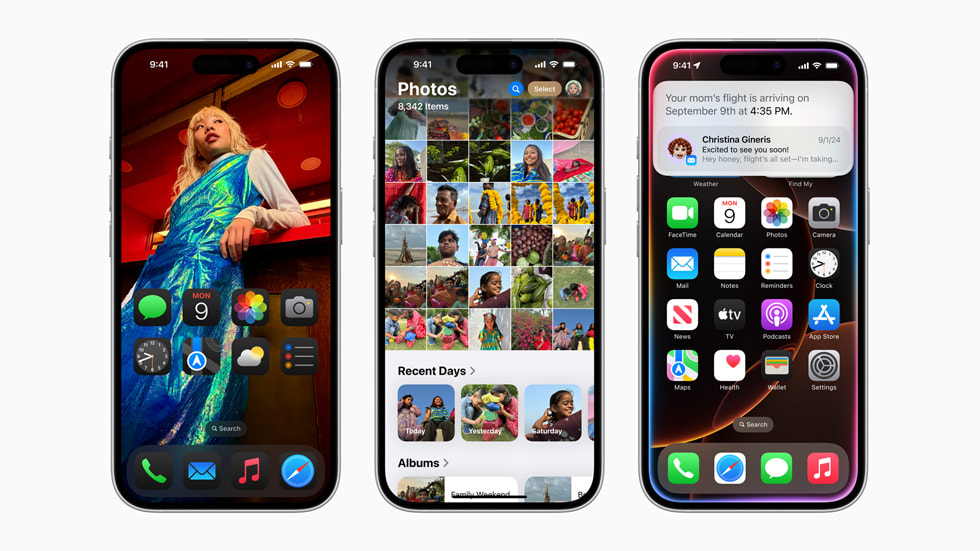
More Customization Than Ever
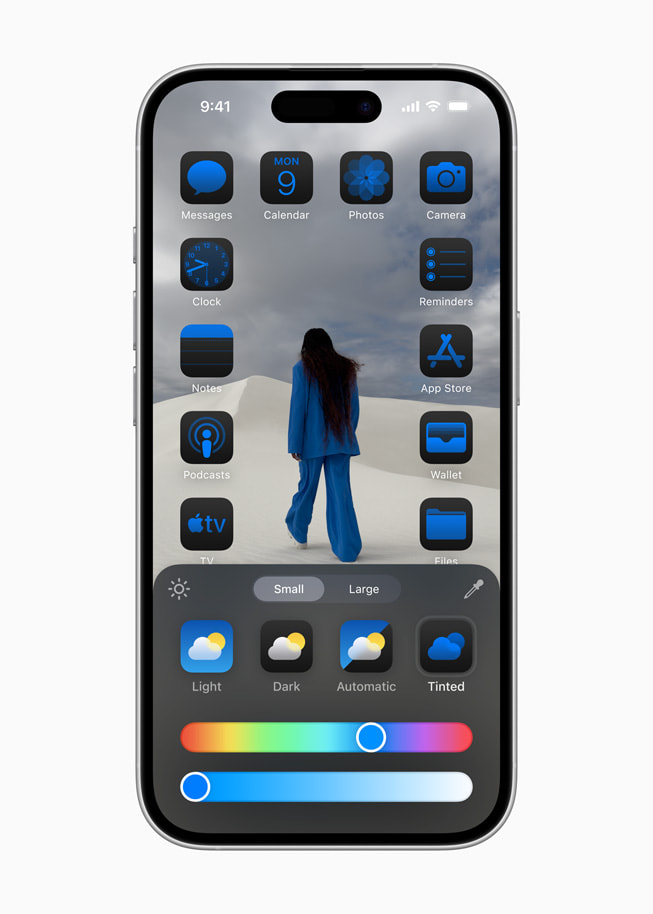
The Biggest Photos Redesign
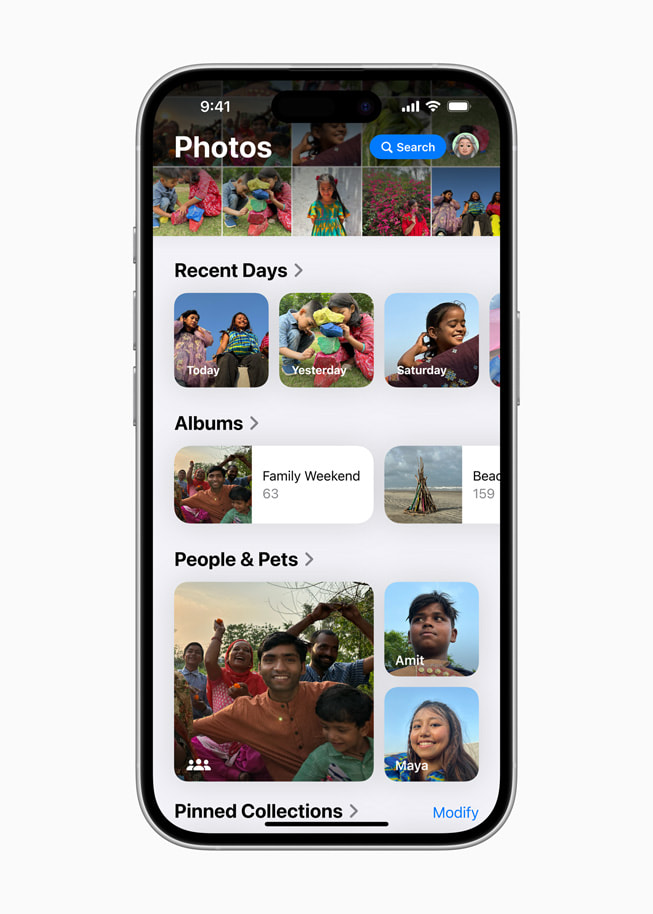
Powerful Ways to Stay Connected in Messages and Phone
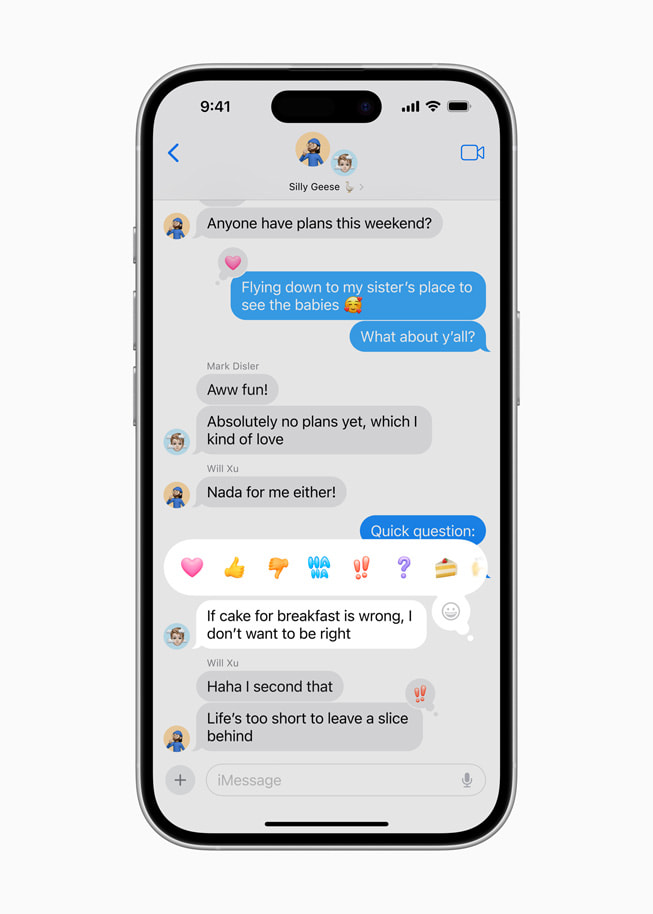
Intelligent Categorization in Mail
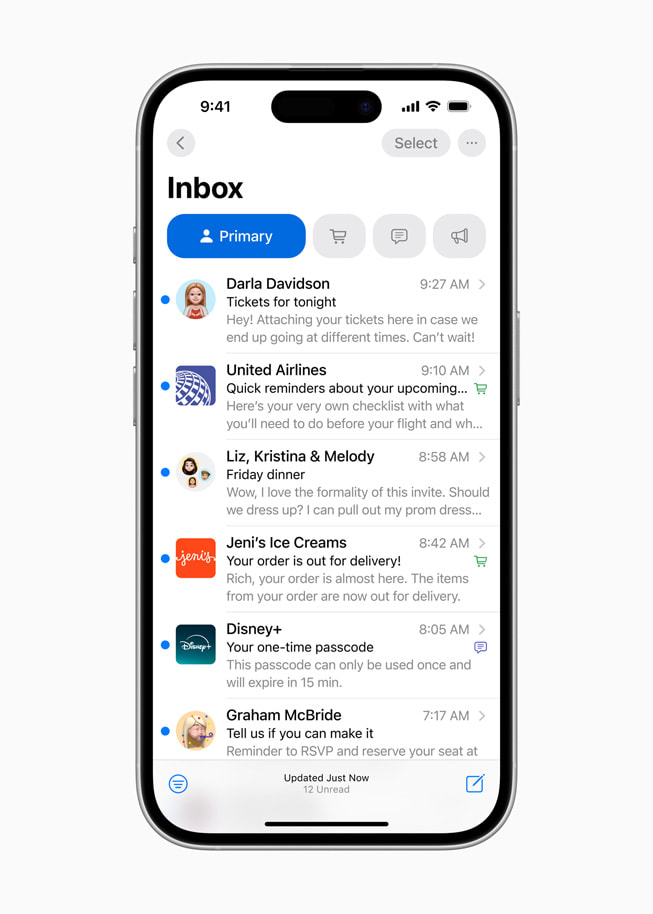
Distraction-Free Browsing with Safari
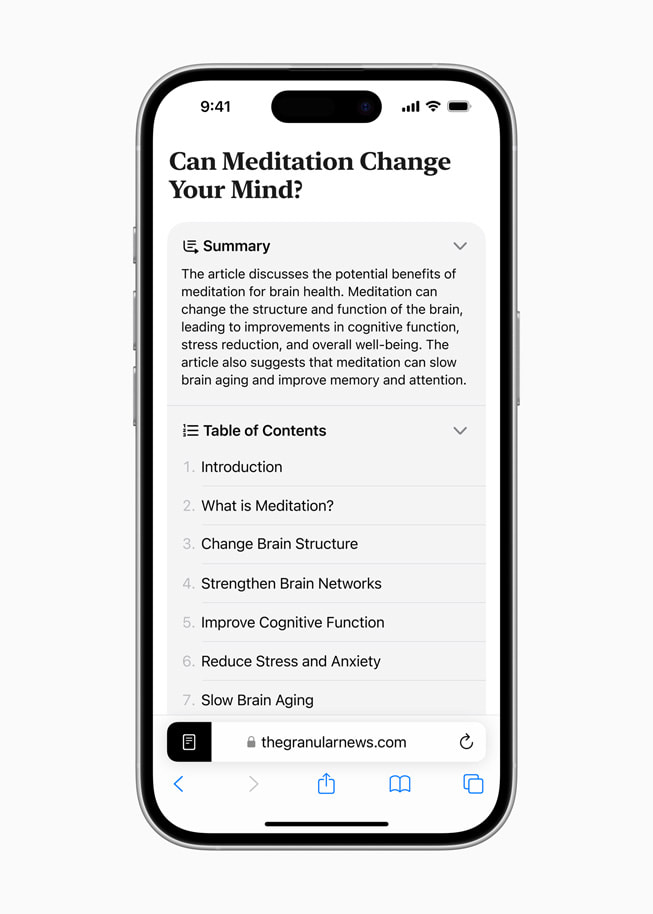
The Brand-New Passwords App
Privacy Features Designed to Empower Users
The First Set of Apple Intelligence Features Available Next Month
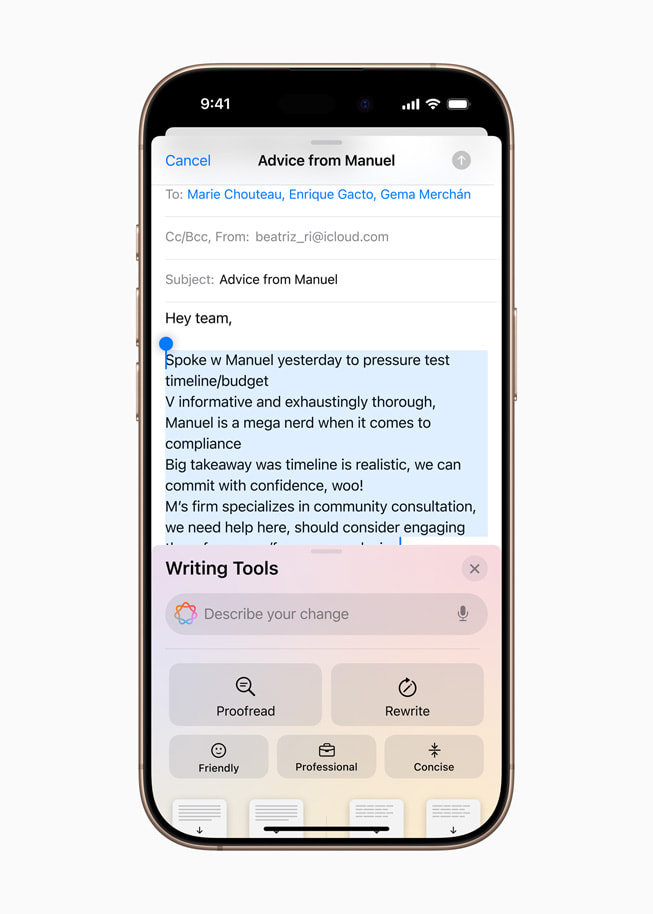
Additional Features
- In Apple Maps , users can browse thousands of hikes across U.S. national parks and easily create their own custom walking routes, which they can access offline. Users can also save their favorite national park hikes, custom walking routes, and locations to an all-new Places Library, and add personal notes about each spot.
- Game Mode enhances the gaming experience with more consistent frame rates, especially during long play sessions, and makes AirPods, game controllers, and other wireless accessories even more responsive.
- Users get new ways to pay with Apple Pay online and in apps on iPhone and iPad. Starting today, eligible U.S. users will be able to redeem rewards with Discover credit cards, 5 as well as apply for loans directly through Affirm, and eligible U.K. users will be able to access installments with Monzo Flex right at checkout when they use Apple Pay. 6 With Tap to Cash, users can send and receive Apple Cash by simply holding their iPhone near another iPhone or Apple Watch. 7 And with the new ticket experience in Apple Wallet , fans can access even more information about their events, such as venue maps, local weather forecasts, recommended Apple Music playlists, and much more. 8
- In the Notes app , math formulas and equations entered while typing are solved instantly. New collapsible sections and highlighting make it easier to emphasize what’s important.
- Calendar becomes even more helpful by showing both events and tasks from Reminders . Users can create, edit, and complete reminders right from Calendar, and the updated month view provides an overview of events and tasks at a glance.
- In Journal , an all-new insights view helps users keep track of their journaling goals, the ability to search and sort entries makes it easy to enjoy past memories, and a Journal widget lets users quickly start an entry from the Home Screen or Lock Screen. Time spent journaling can be saved as mindful minutes in the Health app, and users can log their state of mind right in Journal.
- The Home app introduces guest access, providing users with easy ways to grant guests control of locks, garage doors, and security systems; set schedules for when guests can access the home; and more. With convenient updates to the Energy category, the Home app also makes it easier for eligible users to access, understand, and make more informed decisions about their home electricity use.
- Emergency SOS Live Video allows users to share context through streaming video and recorded media. In the middle of an emergency call, participating emergency dispatchers can send a request for a user to share live video or media from the user’s camera roll over a secure connection, making it easier and faster to get help.
- Updates coming to AirPods will transform the way users take calls, respond to Siri, and immerse themselves in their favorite games with AirPods 4, AirPods 4 with Active Noise Cancellation, and AirPods Pro 2. Voice Isolation helps the caller’s voice be heard in loud or windy environments, while Siri Interactions allow users to nod or shake their head to respond to Siri announcements. AirPods updates also provide the best wireless audio latency Apple has ever delivered for mobile gaming, and add Personalized Spatial Audio for all AirPods models for even more immersive gameplay.
- Later this fall, AirPods Pro 2 add a clinical-grade, over-the-counter Hearing Aid capability for users with perceived mild to moderate hearing loss. Based on results from an intuitive, clinically validated Hearing Test users can take from the comfort of their own home using AirPods Pro 2 and a compatible iPhone or iPad, this new feature seamlessly transforms AirPods Pro into a personalized hearing aid set to meet the specific needs of the user, making access to hearing assistance easier than ever at an approachable price point. 9
- In the Health app , Medical ID has been redesigned to make it even easier for first responders to find the most important information in an emergency. The Health app helps users better understand their data during pregnancy by making adjustments and recommendations to reflect changes in their physical and mental health.
- The Fitness app on iPhone now offers users the ability to customize the Summary tab, and Apple Fitness+ has been redesigned with personalized workout and meditation recommendations in For You, more powerful search, and enhanced awards for extra motivation.
- New accessibility features include Eye Tracking, a built-in option for navigating iPhone with just eyes; Music Haptics, a new way for users who are deaf or hard of hearing to experience music using the Taptic Engine in iPhone; Vocal Shortcuts that enable users to perform tasks by making a custom sound; and Vehicle Motion Cues, which helps reduce motion sickness for passengers using iPhone in a moving vehicle. Accessibility features are now available for CarPlay, including Voice Control, Sound Recognition, Color Filters, and Bold Text.
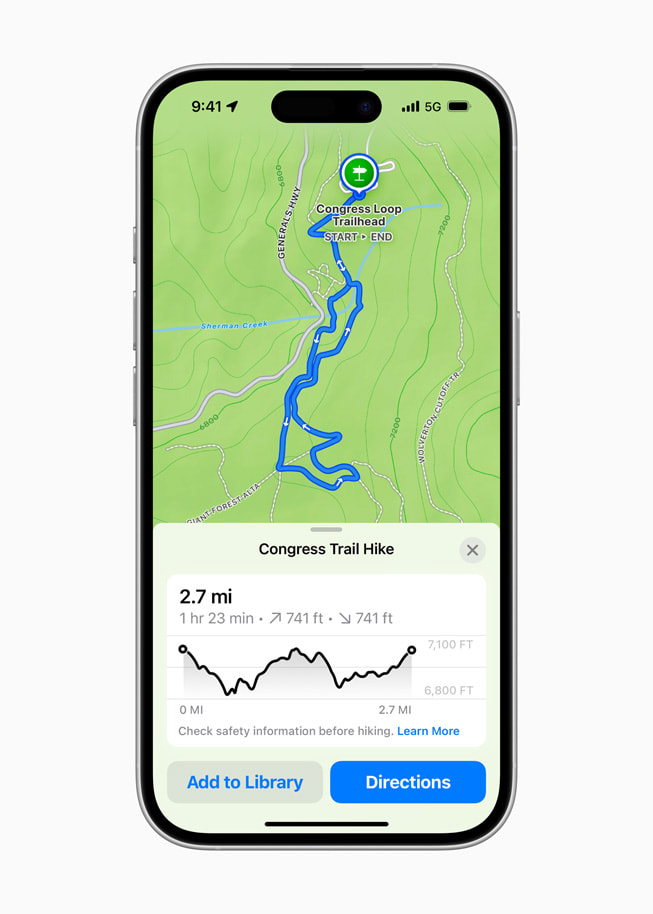
Text of this article
September 16, 2024
iOS 18 is now available, bringing iPhone users around the world new ways to personalize their iPhone with deeper customization to the Home Screen and Control Center; the biggest-ever redesign to Photos, making it even easier to find and relive special moments; and major enhancements to Messages and Mail. Starting next month, iOS 18 will introduce Apple Intelligence, the personal intelligence system that combines the power of generative models with personal context to deliver intelligence that is incredibly useful and relevant while protecting users’ privacy and security. 1
In iOS 18, users can customize their Home Screen in exciting new ways by placing app icons and widgets to frame the wallpaper or create the ideal layout on each page. Users can also choose how the app icons and widgets are presented — light, dark, or with a colored tint — or make app icons appear larger for a new streamlined look. Control Center is redesigned to be even more flexible. Powerful groups of controls — including favorites, media playback, Home controls and connectivity, and the new controls gallery featuring options from third-party apps — can be organized so that they’re always just a swipe away. Users can also access their favorite controls from the Action button, and for the first time, users can change the controls on the Lock Screen or remove them entirely.
The biggest-ever update to Photos makes it easier to find and relive special moments. The beautiful, simplified layout puts the library into a unified yet familiar view. New collections like Recent Days, People & Pets, and Trips automatically keep the library organized with on-device intelligence, so users can spend less time searching and more time enjoying their memories. Users can personalize their experience with a customizable layout that reflects what is most important to them and pin favorite collections to keep them easily accessible.
Messages offers major updates to the ways users express themselves and stay connected. Formatting options like bold, italic, underline, and strikethrough let users better convey tone; all-new text effects bring words, phrases, and sentences to life; emoji and sticker Tapbacks give users endless ways to react in a conversation; and users can compose an iMessage to send later. For times when cellular and Wi-Fi connections aren’t available, Messages via satellite connects users to a satellite in space right from the Messages app to send and receive texts, emoji, and Tapbacks over iMessage and SMS. 2 When messaging contacts who do not have an Apple device, the Messages app now supports RCS for richer media and more reliable group messaging compared to SMS and MMS.
The Phone app helps users stay organized with the ability to record and transcribe live calls, making it easier to recall important details later. 3 Call participants are notified before a recording begins, and transcripts are conveniently saved to the Notes app, allowing users to quickly search and review what was discussed.
Available later this year, categorization in Mail organizes messages to help users stay on top of their inbox. The Primary category lets users focus on the messages that matter most or contain time-sensitive information. Transactions, Updates, and Promotions are grouped by sender in a new digest view that pulls together all relevant emails from a business, allowing users to quickly scan for what’s important in the moment.
Safari is the world’s fastest browser, and with iOS 18, it offers even more capabilities for browsing the web. 4 Highlights intelligently surface key information — like a location’s address, a summary, or more information about a movie, TV show, or song — after a webpage is loaded. The redesigned Reader brings more ways to enjoy articles with a streamlined view, a summary, and a table of contents for longer articles. With Distraction Control, users can hide items on a webpage that they may find disruptive to their browsing, such as sign-in banners or content overlays within a website.
Passwords is a new app built on the foundation of Keychain that makes it even easier for users to access their passwords and see all their credentials — like passwords, passcodes, and verification codes — all in one place. Passwords is backed by incredibly secure end-to-end encryption; seamlessly syncs across devices; and alerts users when a password could be easily guessed, has been used multiple times, or has appeared in a known data leak.
iOS 18 gives users tools to manage who can see their apps, how their contacts are shared, and how their iPhone connects to accessories. Locked and hidden apps offer users peace of mind that information they want to keep private, such as app notifications and content, will not inadvertently be seen by others. Users can now lock an app, and for additional privacy, they can also hide an app, moving it to a locked, hidden apps folder. When an app is locked or hidden, content like messages or emails inside the app are hidden from search, notifications, and other places across the system. In addition, iOS 18 lets users share only specific contacts with an app, and developers can offer users a more seamless and private experience when connecting third-party accessories with iPhone.
Apple Intelligence is deeply integrated into iOS 18, harnessing the power of Apple silicon to understand and create language and images, take action across apps, and draw from personal context to simplify and accelerate everyday tasks — all while protecting users’ privacy and security. The first set of Apple Intelligence features will be available next month, delivering experiences that are delightful, intuitive, easy to use, and specially designed to help users do the things that matter most to them.
With Writing Tools, users can refine their words by rewriting, proofreading, and summarizing text nearly everywhere they write, including Mail, Notes, Pages, and third-party apps. In Photos, the Memories feature now enables users to create the movies they want to see by simply typing a description. In addition, natural language can be used to search for specific photos, and search in videos gets more powerful with the ability to find specific moments in clips. The new Clean Up tool can identify and remove distracting objects in the background of a photo — without accidentally altering the subject. And in the Notes and Phone apps, users can record, transcribe, and summarize audio. When a recording is initiated while on a call in the Phone app, participants are automatically notified, and once the call ends, Apple Intelligence generates a summary to help recall key points.
Siri becomes more natural, flexible, and deeply integrated into the system experience. It has a brand-new design with an elegant glowing light that wraps around the edge of the screen when active on iPhone. Users can type to Siri at any time on iPhone, and can switch fluidly between text and voice as they use Siri to accelerate everyday tasks. With richer language-understanding capabilities, Siri can follow along when users stumble over their words and can maintain context from one request to the next. In addition, with Siri’s extensive product knowledge, it can now answer thousands of questions about the features and settings of Apple devices.
With many Apple Intelligence models running entirely on device, as well as the introduction of Private Cloud Compute — which extends the privacy and security of Apple devices into the cloud to unlock even more intelligence — Apple Intelligence represents an extraordinary step forward for privacy in artificial intelligence.
Availability
iOS 18 is a free software update that is available starting today for iPhone Xs and later. For more information, visit apple.com/ios/ios-18 . Some features may not be available in all regions, all languages, or on all iPhone models. For more information, visit apple.com/ios/feature-availability .
- Apple Intelligence will be available as a free software update. The first set of Apple Intelligence features will be available in beta next month as part of iOS 18.1, iPadOS 18.1, and macOS Sequoia 15.1, with more features rolling out in the months to come. It will be available on iPhone 16, iPhone 16 Plus, iPhone 16 Pro, iPhone 16 Pro Max, iPhone 15 Pro, iPhone 15 Pro Max, and iPad and Mac with M1 and later, with device and Siri language set to U.S. English. Additional languages and platforms are coming over the course of the next year. Later this year, Apple Intelligence will add support for localized English in Australia, Canada, New Zealand, South Africa, and the U.K. In the coming year, Apple Intelligence will expand to more languages, like Chinese, French, Japanese, and Spanish.
- Apple’s satellite features are included for free for two years starting at the time of activation of a new iPhone 14 or later. For Emergency SOS via satellite availability, visit support.apple.com/en-us/HT213426 . Messages via satellite will be available in the U.S. and Canada in iOS 18. SMS availability will depend on carrier. Carrier fees may apply. Users should check with their carrier for details. Satellite network provided by Globalstar Inc. and its affiliates or third-party network providers.
- Call recording and transcription will be available later this year. Transcription will be available in English (U.S., Australia), Spanish (U.S., Mexico), Mandarin Chinese (China mainland), Cantonese (Hong Kong), and Korean (South Korea).
- Testing was conducted by Apple in August 2024. See apple.com/safari for more information.
- Redemptions used with Discover credit cards will be reflected as a statement credit on a customer’s account.
- These new Apple Pay features are offered by participating lending providers in certain markets. Subject to eligibility and approval. More issuers and lenders to come in the future.
- Apple Cash services are provided by Green Dot Bank. Member FDIC. Apple Payments Services LLC, a subsidiary of Apple Inc., is a service provider of Green Dot Bank for Apple Cash accounts. Neither Apple Inc. nor Apple Payments Services LLC is a bank. Learn more about the Terms and Conditions . Only available in the U.S. on eligible devices.
- Ticket enhancements in Apple Wallet are available for events from participating ticket issuers.
- Coming this fall, the Hearing Test and Hearing Aid features will be available in more than 100 countries and regions — including the U.S., Germany, and Japan — where marketing authorization has been received. The Hearing Test and Hearing Aid features are intended for people 18 years old or older, and the Hearing Aid feature is intended for people with perceived mild to moderate hearing loss. The Hearing Test and Hearing Aid features will be supported on AirPods Pro 2 with the latest firmware paired with a compatible iPhone or iPad with iOS 18 or iPadOS 18 and later.
Press Contacts
Nadine Haija
Tania Olkhovaya
Apple Media Helpline
Images in this article
iPad User Guide
- iPad models compatible with iPadOS 18
- iPad mini (5th generation)
- iPad mini (6th generation)
- iPad (7th generation)
- iPad (8th generation)
- iPad (9th generation)
- iPad (10th generation)
- iPad Air (3rd generation)
- iPad Air (4th generation)
- iPad Air (5th generation)
- iPad Air 11-inch (M2)
- iPad Air 13-inch (M2)
- iPad Pro 11-inch (1st generation)
- iPad Pro 11-inch (2nd generation)
- iPad Pro 11-inch (3rd generation)
- iPad Pro 11-inch (4th generation)
- iPad Pro 11-inch (M4)
- iPad Pro 12.9-inch (3rd generation)
- iPad Pro 12.9-inch (4th generation)
- iPad Pro 12.9-inch (5th generation)
- iPad Pro 12.9-inch (6th generation)
- iPad Pro 13-inch (M4)
- Setup basics
- Make your iPad your own
- Keep in touch with friends and family
- Customize your workspace
- Do more with Apple Pencil
- Customize iPad for your child
- What’s new in iPadOS 18
- Turn on and set up iPad
- Wake, unlock, and lock
- Set up cellular service
- Connect to the internet
- Sign in and manage your Apple Account
- Subscribe to iCloud+
- Find settings
- Set up mail, contacts, and calendar accounts
- Learn the meaning of the status icons
- Charge the battery
- Show the battery percentage
- Check battery usage
- Use Low Power Mode to save battery life
- Read and bookmark the user guide
- Adjust the volume
- Learn basic gestures
- Learn advanced gestures
- Find and use your apps in App Library
- Switch between apps
- Zoom an app to fill the screen
- Quit and reopen an app
- Drag and drop
- Open two apps in Split View
- Switch an app window to Slide Over
- View an app’s windows and workspaces
- Multitask with Picture in Picture
- Move, resize, and organize windows
- Access features from the Lock Screen
- Perform quick actions
- Search on iPad
- Get information about your iPad
- View or change cellular data settings
- Travel with iPad
- Change or turn off sounds
- Create a custom Lock Screen
- Change the wallpaper
- Adjust the screen brightness and color balance
- Customize the text size and zoom setting
- Change the name of your iPad
- Change the date and time
- Change the language and region
- Add, edit, and remove widgets
- Move apps and widgets on the Home Screen
- Customize apps and widgets on the Home Screen
- Lock or hide an app
- Organize your apps in folders
- Remove or delete apps
- Use and customize Control Center
- Change your default web browser or email app
- Rotate your iPad screen
- View and respond to notifications
- Change notification settings
- Set up a focus
- Allow or silence notifications for a Focus
- Turn a Focus on or off
- Customize sharing options
- Type with the onscreen keyboard
- Dictate text
- Commands for dictating text
- Move the onscreen keyboard
- Select and edit text
- Use predictive text
- Use text replacements
- Add or change keyboards
- Add emoji, Memoji, and stickers
- Take a screenshot
- Take a screen recording
- Write and draw in documents
- Add text, shapes, stickers, and more
- Fill out forms, sign documents, and create signatures
- Interact with content in a photo or video
- Identify objects in your photos and videos
- Lift a subject from the photo background
- Take photos
- Take Live Photos
- Take a selfie
- Take a Portrait mode selfie
- Record videos
- Change advanced camera settings
- Adjust HDR camera settings
- View, share, and print photos
- Use Live Text
- Scan a QR code
- Scan documents
- Subscribe to Apple Arcade
- Play with friends in Game Center
- Connect a game controller
- Use App Clips
- Update apps
- View or cancel subscriptions
- Manage purchases, settings, and restrictions
- Install and manage fonts
- Buy books and audiobooks
- Annotate books
- Access books on other Apple devices
- Listen to audiobooks
- Set reading goals
- Organize books
- Create and edit events in Calendar
- Send invitations
- Reply to invitations
- Change how you view events
- Search for events
- Change Calendar settings
- Schedule or display events in a different time zone
- Keep track of events
- Use multiple calendars
- Use reminders in Calendar
- Use the Holidays calendar
- Share iCloud calendars
- Use the basic calculator
- Use the scientific calculator
- Solve math with Math Notes
- Work with graphs in Math Notes
- Convert units or currency
- See previous calculations
- See the world clock
- Set an alarm
- Use the stopwatch
- Add and use contact information
- Edit contacts
- Add your contact info
- Share Contacts on iPad
- Add or remove accounts
- Hide duplicate contacts
- Sync contacts across devices
- Import contacts
- Export contacts
- Get started with FaceTime
- Make FaceTime calls
- Receive FaceTime calls
- Create a FaceTime link
- Take a Live Photo
- Turn on Live Captions
- Use other apps during a call
- Make a Group FaceTime call
- View participants in a grid
- Use SharePlay to watch, listen, and play together
- Share your screen in a FaceTime call
- Request or give remote control in a FaceTime call
- Collaborate on a document in a FaceTime call
- Use video conferencing features
- Hand off a FaceTime call to another Apple device
- Change the FaceTime video settings
- Change the FaceTime audio settings
- Change your appearance
- Leave a call or switch to Messages
- Block a FaceTime call and report it as spam
- Modify files and folders
- Find files and folders
- Organize files and folders
- Send files from the Files app
- Set up iCloud Drive
- Share files and folders in iCloud Drive
- Transfer files from iPad to a storage device, a server, or the cloud
- Share your location
- Add or remove a friend
- Locate a friend
- Get notified when friends change their location
- Notify a friend when your location changes
- Add your iPad
- Get notified if you leave a device behind
- Locate a device
- Mark a device as lost
- Erase a device
- Remove a device
- Add an AirTag
- Share an AirTag or other item in Find My on iPad
- Add a third-party item
- Get notified if you leave an item behind
- Locate an item
- Mark an item as lost
- Remove an item
- Adjust map settings
- Turn off Find My
- Get started with Freeform
- Create a Freeform board
- Draw or handwrite
- Solve handwritten math problems
- Add text in sticky notes, shapes, and text boxes
- Add shapes, lines, and arrows
- Add diagrams
- Add photos, videos, and other files
- Apply consistent styles
- Position items on a board
- Navigate and present scenes
- Send a copy or PDF
- Print a board
- Share boards and collaborate
- Search Freeform boards
- Delete and recover boards
- Change Freeform settings
- Get started with Health
- Fill out your Health Details
- Intro to Health data
- View your health data
- Share your health data
- View health data shared by others
- Download health records
- View health records
- Log menstrual cycle information
- View menstrual cycle predictions and history
- Log a pregnancy
- Track your medications
- Learn more about your medications
- Log your state of mind
- Take a mental health assessment
- Customize your Sleep Focus
- Turn Sleep Focus on or off
- View your sleep history
- Check your headphone audio levels
- Use audiogram data
- Back up your Health data
- Intro to Home
- Upgrade to the new Home architecture
- Set up accessories
- Control accessories
- Control your home using Siri
- Use Grid Forecast to plan your energy usage
- View electricity usage and rates on iPad (participating U.S. providers only)
- Set up HomePod
- Control your home remotely
- Create and use scenes
- Use automations
- Set up security cameras
- Use Face Recognition
- Configure a router
- Invite others to control accessories
- Add more homes
- Get music, movies, and TV shows
- Get ringtones
- Manage purchases and settings
- Use iPad like a magnifying glass
- Customize controls
- Get descriptions of visual information around you
- Detect people around you
- Detect furniture around you
- Detect doors around you
- Detect text around you and have it read out loud
- Set up shortcuts for Live Recognition
- Add and remove email accounts
- Set up a custom email domain
- Check your email
- Unsend email with Undo send
- Reply to and forward emails
- Save an email draft
- Add email attachments
- Download email attachments
- Annotate email attachments
- Set email notifications
- Search for email
- Organize your email in mailboxes
- Flag or block emails
- Filter emails
- Use Hide My Email
- Use Mail Privacy Protection
- Change Mail settings
- Delete and recover emails
- Add a Mail widget to your Home Screen
- Print emails
- Use keyboard shortcuts
- Explore 3D maps
- Get travel directions
- Change or add stops to your route
- View a route overview or a list of turns
- Change settings for spoken directions
- Get driving directions
- Report traffic incidents
- Get cycling directions
- Get walking directions
- Save walks or hikes
- Get transit directions
- Get traffic and weather info
- Estimate travel time and ETA
- Download offline maps
- Search for places
- Add places and notes to your library
- Mark places with pins
- Share places
- Rate places and add photos
- Organize places with custom guides
- Find nearby attractions, restaurants, and services
- Get information about places
- Explore places with guides
- Look around places
- Take Flyover tours
- Clear location history
- Delete recent directions
- Choose a default travel mode and units
- Report an issue with Maps
- Measure dimensions
- View and save measurements
- Measure a person’s height
- Set up Messages
- About iMessage
- Send and reply to messages
- Unsend and edit messages
- Keep track of messages
- Forward and share messages
- Group conversations
- Watch, listen, or play together using SharePlay
- Share screens
- Collaborate on projects
- Use iMessage apps
- Take and edit photos or videos
- Share photos, links, and more
- Send stickers
- Create and send Memoji
- React with Tapbacks
- Style and animate messages
- Draw and handwrite messages
- Send and save GIFs
- Request, send, and receive payments
- Send and receive audio messages
- Turn read receipts on or off
- Change notifications
- Block, filter, and report messages
- Delete messages and attachments
- Recover deleted messages
- Subscribe to Apple Music
- Get personalized recommendations
- Mark items as favorites
- Add music and listen offline
- Create an Apple Music Profile
- Share music with friends
- See what friends are listening to
- Search for music
- Find music shared with you
- Find new music
- Use the music player controls
- Use Siri to play music
- Play lossless audio
- Play Spatial Audio
- Listen to radio
- Play music together using SharePlay
- Play music together in the car
- Adjust the sound
- Queue up your music
- Shuffle or repeat songs
- Apple Music Sing
- Show song credits and lyrics
- Tell Apple Music what you enjoy
- Intro to playlists
- Create, edit, and delete playlists
- Collaborate on a playlist
- Join a collaborative playlist
- Add a reaction to a collaborative playlist
- Get started with News
- Use News widgets
- See news stories chosen just for you
- Read and share stories
- Follow your favorite teams with My Sports
- Subscribe to Apple News+
- Browse and read Apple News+ stories
- Use Offline Mode to read downloaded News content
- Manually download Apple News+ issues
- Find puzzles in Apple News+
- Solve crossword and crossword mini puzzles
- Solve Quartiles puzzles
- Search for stories in News
- Save stories in News
- Clear your reading history in News
- Customize the News tab bar
- Subscribe to individual news channels
- Get started with Notes
- Create and format notes
- Use Quick Notes
- Add drawings and handwriting
- Enter formulas and equations
- Add photos, video, and more
- Record and transcribe audio
- Scan text and documents
- Work with PDFs
- Search notes
- Organize in folders
- Organize with tags
- Use Smart Folders
- Share and collaborate
- Export or print notes
- Change the Notes view
- Change Notes settings
- Use passwords on iPad
- Find your password for a website or app
- Change the password for a website or app
- Remove a password
- Recover a deleted password
- Create a password for a website or app
- Use passkeys to sign in to apps and websites
- Sign in with Apple
- Share passwords
- Automatically fill in strong passwords
- Change weak or compromised passwords
- View your passwords and related information
- Find your Wi-Fi password
- Share passwords securely with AirDrop
- Make your passwords available on all your devices
- Automatically fill in verification codes
- Sign in with fewer CAPTCHA challenges
- Use two-factor authentication
- Use security keys
- Delete, share, or copy a photo
- View and edit Photo Booth photos in the Photos app
- Get started with Photos
- View photos and videos
- See photo and video information
- Find photos and videos by date
- Find and name people and pets
- Find group photos
- Browse photos by location
- Find recently saved photos
- Find your travel photos
- Find receipts, QR codes, recently edited photos, and more
- Find photos, videos, and more by media type
- Customize the Photos app
- Filter and sort the photo library
- Back up and sync your photos with iCloud
- Delete or hide photos and videos
- Search for photos and videos
- Get wallpaper suggestions
- Watch memories
- Personalize your memories
- Play videos and slideshows
- Feature someone less
- Create Photo albums
- Edit and organize albums
- Filter and sort photos and videos in albums
- Share photos and videos
- Share long videos
- Create shared albums
- Add and remove people in a shared album
- Add and delete photos and videos in a shared album
- Set up or join an iCloud Shared Photo Library
- Use iCloud Shared Photo Library
- Add content to an iCloud Shared Photo Library
- Edit photos and videos
- Crop, rotate, flip, or straighten photos and videos
- Undo and revert photo edits
- Trim video length, adjust speed, and edit audio
- Edit Cinematic videos
- Edit Live Photos
- Edit portraits
- Make stickers from your photos
- Duplicate and copy photos and videos
- Merge duplicate photos
- Import and export photos and videos
- Print photos
- Find podcasts
- Listen to podcasts
- View podcast transcripts
- Follow your favorite podcasts
- Use the Podcasts widget
- Organize your podcast library
- Download, save, remove, and share podcasts
- Subscribe to podcasts
- Listen to subscriber-only content
- Change download settings
- Get started with Reminders
- Set reminders
- Make a grocery list
- Add details
- Complete and remove items
- Edit and organize a list
- Search your lists
- Organize multiple lists
- Use Smart Lists
- Print a list
- Work with templates
- Change Reminders settings
- Browse the web
- Search for websites
- See highlights
- Customize your Safari settings
- Change the layout
- Create multiple Safari profiles
- Open and close tabs
- Organize your tabs with Tab Groups
- View your tabs from another Apple device
- Share Tab Groups
- Use Siri to listen to a webpage
- Bookmark a website
- Bookmark a website as a favorite
- Save pages to a Reading List
- Find links shared with you
- Annotate and save a webpage as a PDF
- Automatically fill in forms
- Get extensions
- Hide distractions when browsing
- Hide distractions when reading
- Block pop-ups
- Clear your cache and cookies
- Enable cookies
- Browse the web privately
- Sign in with passkeys in Safari
- Check stocks
- Manage multiple watchlists
- Read business news
- Add earnings reports to your calendar
- Use a Stocks widget
- Translate text, voice, and conversations
- Translate text in apps
- Translate with the camera view
- Subscribe to Apple TV+, MLS Season Pass, or a channel
- Find shows, movies, and more
- Personalize the Home tab
- Buy, rent, or pre-order items
- Stream content and control playback
- Watch sports
- Watch multiple live sports streams
- Manage your library
- Add your TV provider
- Change the settings
- Make a recording
- View a transcription
- Play it back
- Edit or delete a recording
- Keep recordings up to date
- Organize recordings
- Search for or rename a recording
- Share a recording
- Duplicate a recording
- Check the weather
- Check the weather in other locations
- View weather maps
- Manage weather notifications
- Use Weather widgets
- Learn the weather icons
- Find out what Siri can do
- Tell Siri about yourself
- Have Siri announce calls and notifications
- Add Siri Shortcuts
- About Siri Suggestions
- Change Siri settings
- Set up Family Sharing
- Add Family Sharing members
- Remove Family Sharing members
- Share subscriptions
- Share purchases
- Share locations with family and locate lost devices
- Set up Apple Cash Family and Apple Card Family
- Set up parental controls
- Set up a child’s device
- Get started with Screen Time
- Protect your vision health with Screen Distance
- Set up Screen Time
- Set communication and safety limits and block nudity
- Set up Screen Time for a family member
- Set up Apple Pay
- Use Apple Pay in apps and on the web
- Use Apple Cash
- Use Apple Card
- Remove payment cards
- Change Wallet & Apple Pay settings
- Power adapter and charge cable
- Use AirPods
- Use EarPods
- Use headphone audio-level features
- Apple Pencil compatibility
- Pair and charge Apple Pencil (1st generation)
- Pair and charge Apple Pencil (2nd generation)
- Pair and charge Apple Pencil (USB-C)
- Pair and charge Apple Pencil Pro
- Enter text with Scribble
- Draw with Apple Pencil
- Take and mark up a screenshot with Apple Pencil
- Quickly write notes
- Wirelessly stream videos and photos to Apple TV or a smart TV
- Connect to a display with a cable
- HomePod and other wireless speakers
- iPad keyboards
- Switch between keyboards
- Enter characters with diacritical marks
- Use shortcuts
- Choose an alternative keyboard layout
- Change typing assistance options
- Connect Magic Trackpad
- Trackpad gestures
- Change trackpad settings
- Connect a mouse
- Mouse actions and gestures
- Change mouse settings
- External storage devices
- Connect Bluetooth accessories
- Play audio from your iPad on a Bluetooth accessory from your iPad
- Apple Watch with Fitness+
- Polishing cloth
- Work across devices using Continuity
- Use AirDrop to send items to nearby devices
- Hand off tasks between devices
- Cut, copy, and paste between iPad and other devices
- Stream video or mirror the screen of your iPad
- Allow phone calls and text messages on your iPad
- Share your internet connection with Personal Hotspot
- Use iPad as a webcam for Apple TV
- Insert sketches, photos, and scans on Mac
- Use iPad as a second display for Mac
- Use a keyboard and mouse or trackpad across your Mac and iPad
- Connect iPad and your computer with a cable
- Transfer files between devices
- Transfer files with email, messages, or AirDrop
- Transfer files or sync content with the Finder or iTunes
- Automatically keep files up to date with iCloud
- Get started with accessibility features
- Use accessibility features during setup
- Change Siri accessibility settings
- Quickly turn accessibility features on or off
- Overview of accessibility features for vision
- View a larger version of text you’re reading or typing
- Change display colors
- Make text easier to read
- Reduce onscreen motion
- Use iPad more comfortably while riding in a vehicle
- Customize per-app visual settings
- Hear what’s on the screen or typed
- Hear audio descriptions
- Turn on and practice VoiceOver
- Change your VoiceOver settings
- Use VoiceOver gestures
- Operate iPad when VoiceOver is on
- Control VoiceOver using the rotor
- Use the onscreen keyboard
- Write with your finger
- Keep the screen off
- Use VoiceOver with an external keyboard
- Use a braille display
- Type braille on the screen
- Customize gestures and keyboard shortcuts
- Use VoiceOver with a pointer device
- Get live descriptions of your surroundings
- Use VoiceOver in apps
- Overview of accessibility features for mobility
- Use AssistiveTouch
- Use an adjustable onscreen trackpad on iPad
- Control iPad with the movement of your eyes
- Adjust how iPad responds to your touch
- Auto-answer calls
- Change Face ID and attention settings
- Use Voice Control commands
- Adjust the top or Home button
- Use Apple TV Remote buttons
- Adjust pointer settings
- Adjust keyboard settings
- Control iPad with an external keyboard
- Adjust AirPods settings
- Adjust double tap and squeeze settings for Apple Pencil
- Intro to Switch Control
- Set up and turn on Switch Control
- Select items, perform actions, and more
- Control several devices with one switch
- Overview of accessibility features for hearing
- Use hearing devices
- Use Live Listen
- Use sound recognition
- Set up and use RTT
- Flash the indicator light for notifications
- Adjust audio settings
- Play background sounds
- Display subtitles and captions
- Show transcriptions for Intercom messages
- Get live captions of spoken audio
- Overview of accessibility features for speech
- Type to speak
- Record your personal voice
- Use Vocal Shortcuts
- Overview of cognitive accessibility features
- Lock iPad to one app
- Control what you share
- Set a passcode
- Set up Face ID
- Set up Touch ID
- Turn on Lock Screen features
- Keep your Apple Account secure
- Control app tracking permissions
- Control the location information you share
- Control access to information in apps
- Control access to contacts
- Control how Apple delivers advertising to you
- Control access to hardware features
- Create and manage Hide My Email addresses
- Protect your web browsing with iCloud Private Relay
- Use a private network address
- Use Advanced Data Protection
- Use Lockdown Mode
- Receive warnings about sensitive content
- Use Contact Key Verification
- Turn iPad on or off
- Force restart iPad
- Update iPadOS
- Back up iPad
- Reset iPad settings
- Restore all content from a backup
- Restore purchased and deleted items
- Sell, give away, or trade in your iPad
- Install or remove configuration profiles
- Important safety information
- Important handling information
- Find more resources for software and service
- FCC compliance statement
- ISED Canada compliance statement
- Apple and the environment
- Class 1 Laser information
- Disposal and recycling information
- Unauthorized modification of iPadOS
- ENERGY STAR compliance statement
Open and close tabs in Safari on iPad
Use tabs to help you navigate between multiple open webpages.
Note: If you’re using the Compact Tab Bar layout, the menus and other items may look different from what’s described in this guide. See Change the layout of Safari .
Open a link in a new tab
Touch and hold the link, then tap Open in Background.
View a tab’s history
You can see which webpages you previously visited in this tab.
Tip: To close all tabs in this Tab Group at the same time, touch and hold Done, then tap Close All [number of] Tabs.
Open a recently closed tab

COMMENTS
Change the display controls for a website on Safari. You can hide the search field, switch to Reader, and more. Open the Safari app on your iPad. Tap , then do any of the following: Hide the search field: Tap Hide Toolbar (tap the top of the screen to get it back). See a streamlined view of the webpage: Tap Show Reader (if available).
Tap the Search bar at the top of the screen. When your keyboard opens, type in Safari. Search results should start to pop up as soon as you begin typing. [5] 3. Tap and hold the Safari icon. Once Safari appears in your search results, touch and hold the icon to open a context menu. 4. Select Add to Home Screen.
What to Know. Open Safari > go to web page you want to add as Home screen icon > Share icon > Add to Home Screen. Next, edit the shortcut name (optional) > select Add to save the shortcut. This article explains how to add an iPad Home screen icon for a specific web page to serve as a shortcut to that page.Information applies to iPads with iOS 7 ...
A Share menu will appear on the right side of the screen. Tap "Add to Home Screen." Next, a pop-up titled "Add to Home Screen" will appear where you can name your new Home screen icon anything you'd like. Once you're done, tap "Add" in the top-right corner of the box. The icon for the website will appear on your iPad's Home screen.
On Mac. Open Safari on your Mac, and then follow these steps to change your Homepage: 1) Click Safari > Preferences from the top menu bar. 2) Choose the General tab. 3) In the box next to Homepage, enter the URL of the website you want. If you are currently on that site, just click the Set Current Page button. This will change that URL for you.
Launch Safari on your iPhone or iPad. Navigate to the site that you want to create a Home screen shortcut to. Tap the Share icon (the square with an arrow pointing out of it) at the ...
Go to the Home Screen. Touch and hold the Home Screen background until the icons begin to jiggle. Tap Edit at the top of the screen, then choose Customize. Do any of the following: Make the icons bigger: Tap Large. (In large size, the names of the icons disappear.) Choose a dark or light appearance for icons and widgets: Tap Dark or Light. To ...
Table of Contents. Change the layout in Safari on iPad. In the Safari app , you can choose the tab bar layout that works best for you. Go to Settings > Safari, then scroll down to Tabs. Select either Separate Tab Bar or Compact Tab Bar. You can move between layouts as much as you want without losing the tabs you have open. Note: If you're ...
First, open Safari on your iPhone or iPad and open a new tab by tapping the tabs button (two overlapping rectangles), then tapping the plus ("+") button. You'll see Safari's "Start Page" by default. To edit what's on the Start Page, scroll down if necessary and tap the "Edit" button. When you tap "Edit," a "Customize Start Page" window will appear.
Step 1: Open Safari. Locate the Safari app icon on your iPad's home screen and tap it. Opening Safari is your gateway to the internet. The icon looks like a blue compass and is usually found on the dock or the first screen.
This will enable Safari, making it accessible on your Home screen for easy browsing. After completing these steps, Safari should be enabled on your iPad, and you can start using it immediately for all your web browsing needs. Tips for Enabling Safari on iPad. Make sure your iPad's software is up-to-date for the best performance.
Here's how to set your Safari homepage on a Mac. Open Safari on your Mac. Select Safari from the menu bar and choose Preferences from the drop-down menu. Select the General tab on the Preferences screen. Next to Homepage, type the URL you want to set as the Safari homepage. Select Set to Current Page to choose the page you're on.
Things You Should Know. To add a bookmark on an iPad, open a webpage in Safari. Tap "Share" → "Add Bookmark" → "Save". By default, saved bookmarks can be found in "Favorites". Tap the sidebar icon → "Bookmarks" → "Favorites". To create a new folder, open the sidebar. Tap "Bookmarks" → "Edit" → "New Folder" → enter a name → "Done".
Safari > Preferences (Command + comma) > General > New Window Opens With > Homepage > Enter Homepage address in blank provided below or click Set to current page. No, the previous responses are correct. You, on the other hand, are apparently discussing Safari on a computer. This is the iPad forum. randled.
On your iPhone or iPad, swipe left on your Home Screen pages until you get to the last page. Swipe left again to see your App Library. In the search field, type Safari. There are two ways you can get Safari back to your Home Screen or Dock: Method 1: Press and hold on Safari. A menu will appear. Tap on Add to Home Screen.
Here's how: Open the Shortcuts app. Tap + in the top-right corner of the screen to create a new shortcut. Search for Safari in the Search Actions bar and tap the appropriate result. Next, select the Open URLs action. Now, tap the blue URL text and paste the URL of the website you want to add to the Home Screen.
Tap on the Share icon, it looks like a box with an arrow coming out of the top. Scroll through the list of sharing options and choose "Add to Home Screen". Give the home screen icon a name (like "OSXDaily.com") and tap "Add". Return to the Home Screen of iPhone or iPad to find the newly created website available as an icon.
Here's how to add the Safari app on your home screen via the spotlight search: 1. To access Spotlight, swipe down on your home screen. 2. Enter Safari and click just on the Safari browser in the search results. 3. It will take you to the application's location, sometimes known as a folder or page. 4.
To do this, find the app in question either on your iPhone or iPad Home screen or within the App Library (by swiping left all the way to the end of your Home screens) and then tap and hold it. Choose "Require Face ID" on iPhone or "Require Touch ID" on iPad. ... For example, you can't hide Safari, Phone, Photos, or (rather bizarrely ...
Tap , then tap Bookmarks. Tap Edit, then do any of the following: Create a new folder: Tap New Folder at the bottom left, enter a name, then tap Done. Move a bookmark into a folder: Tap the bookmark, tap the Location, then tap a folder. Tap to return to your bookmarks. Delete bookmarks: Tap . Rename bookmarks: Tap the bookmark, enter a new name ...
Go to the Home Screen. Touch and hold the Home Screen background until the items begin to jiggle. Drag the app or widget to one of the following locations: Another location on the same page—including the top, bottom, or side of the screen. Another Home Screen page. Drag the app or widget to the right edge of the screen.
iOS 18 is now available, bringing iPhone users around the world new ways to personalize their iPhone with deeper customization to the Home Screen and Control Center; the biggest-ever redesign to Photos, making it even easier to find and relive special moments; and major enhancements to Messages and Mail. Starting next month, iOS 18 will introduce Apple Intelligence, the personal intelligence ...
Change Account Settings From an Apple Device . Go to Settings on your iPad or iPhone and tap your name at the top of the screen. To view or change your contact information, tap Personal ...
Customize the Home Screen. Organize your apps in folders; Add, edit, and remove widgets; Move apps and widgets on the Home Screen; Remove or delete apps; ... Open and close tabs in Safari on iPad. In the Safari app , use tabs to help you navigate between multiple open webpages. Note: ...